#nineteen to twenty icons
Explore tagged Tumblr posts
Text





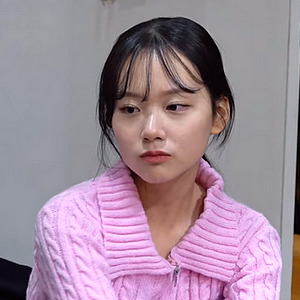

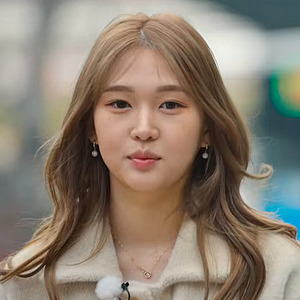

nineteen to twenty like or reblog if you use them
#nineteen to twenty icons#nineteen to twenty#19/20#reality show#reality shows icons#netflix#jeong ji woo#jeong jiwoo#choi yerin#choi ye rin#icons#without psd
27 notes
·
View notes
Note
can we get some more background on collide’s ellie before the story started? lowkey curious about her groupie days hahaha
THANK YOU GORG NONNIE I'VE ALWAYS WANTED TO WRITE THIS. TURN IT UPPPP



Rockstar!ellie williams’ life before you came crashing into it was already wild in its own right. the fireflies started as this messy little project in high school, just three angsty teenagers skipping class to rehearse in jesse’s garage and dream too big. but from the very beginning, ellie had that thing. that frontwoman energy. raw, magnetic, loud when she wanted to be and quiet in the moments that mattered.
of course, being joel miller’s daughter didn’t hurt either. the joel miller—rock legend, guitarist god, literal music royalty. she grew up with guitars in every corner of the house, got her first custom pedal at twelve, and was getting dropped off at school in a vintage mustang with the windows down and her dad blasting nirvana like he wasn’t a whole icon. people were paying attention before she even opened her mouth.
their debut album dropped when she was barely nineteen and it exploded. like, charts on fire, critics losing their minds, fans already tattooing lyrics on their ribs kind of explosion. it was rough and loud and painfully honest, and people ate it up. suddenly the fireflies were everywhere—magazine covers, award shows, late night interviews where ellie would always roll her eyes and let dina do the talking.
and ellie? ellie was living like a rockstar. full-speed. full-chaos. she had girls lined up at every venue, backstage passes tucked into her back pocket like candy. groupies every night, different cities, different names she couldn’t remember in the morning. she wasn’t cruel about it, just detached. like she knew how to give people a night they’d remember forever, while she forgot it the second it was over.
there were stories, obviously. ellie williams didn’t just flirt with the whole sex-drugs-rock-and-roll lifestyle—she practically rebranded it.
like the time in chicago, where she went MIA a few hours before the show and no one could find her. security was panicking, dina was pacing, and jesse was one call away from having a heart attack—until ellie strolled into the venue ten minutes before set time, lipstick smudged all over her jaw, reeking of tequila and weed, with three girls trailing behind her like she was the messiah of sex. she still performed like nothing happened, of course. even signed a bra on stage mid-song.
or berlin, when she stopped the show halfway through, locked eyes with a girl in the front row who looked like she’d been crying, and straight-up jumped off stage. mic still in hand, she kissed her so hard it made at least 20 headlines. she never got her name, but later admitted in an interview that it was one of the best kisses of her life.
and then there was that rooftop in LA—the infamous afterparty for some alt girlband’s tour finale. ellie was already drunk, half in her underwear, making out with the rival band’s lead singer against a glass wall while their drummer tried to politely look away. jesse swears he walked in on her mid-threesome in the guest bedroom later that night, but ellie still denies it to this day. kinda.
there was one show—vegas, obviously—where ellie walked off stage with nearly twenty bras and at least ten pairs of panties stuffed into her mic stand, draped over her guitar, even hanging off her boot somehow. halfway through the set, it basically turned into a lingerie rainstorm. she played through it like a pro, flashing that smug little grin every time another piece hit the stage, only pausing once to pick up a red lace thong, twirl it around her finger, and go, “if you want it back, you’re gonna have to come get it yourself.” the crowd lost it.
dina joked that they could open a lingerie store with all the stuff ellie got that night. ellie just shrugged, grinning, and said, “what can i say? i’m a woman of the people.”
it was a mess, but it was her mess. untouchable, unstoppable, with this cocky grin and a body count that would make most people faint. music was her religion and girls were her favorite sin.
but all of that changed when you showed up. not right away—ellie was too stubborn for that. but eventually, the chaos started to feel a little quieter. the noise started to mean something. and for the first time, ellie started thinking less about the next city, and more about who she wanted waiting for her when the lights went down.
#⭒࿐COLLIDE - series#lesbian#lesbian pride#ellie williams tlou#ellie williams#ellie williams imagine#ellie williams smut#lesbian shot#ellie x reader#ellie williams x you#sapphic smut#ellie the last of us#tlou part 2#ellie tlou#ellie x fem reader#ellie x you#ellie x y/n#ellie williams x reader#the last of us 2#lesbianism#sapphic#wlw post#wlw#wlw yearning#ellie williams headcanons#ellie williams fanfiction#ellie williams the last of us#ellie willams x reader#dina woodward
332 notes
·
View notes
Text
He Walks: Dick Grayson, the Survivor
This is a meta written for the ten year celebration of Grayson. For @grayson10yearslater.
From it’s prologue in Nightwing #30, Grayson by Tom King and Tim Seeley, boldly poses its readers with the question of how to describe one of DC’s oldest and most iconic characters when he is stripped of his familiar superhero identities. Who is Dick Grayson when he can’t hide behind Robin? Nightwing? Batman?

[King, Tom; Seeley, Tim; Tynion IV, James, writers. Janin, Mikel; Hetrick, Meghan; Garron, Javier; Lucas Jorge, illustrators. Setting Son. Nightwing. 30, e-book ed. DC Comics, 2014. Page 30]
Divided into twenty issues and three annuals, the story explores the theme of identity from all angles, pushing Dick away from his comforts to dissect the different layers of his character. A hero, the end of the last issue seems to say, is the true answer to this difficult question.
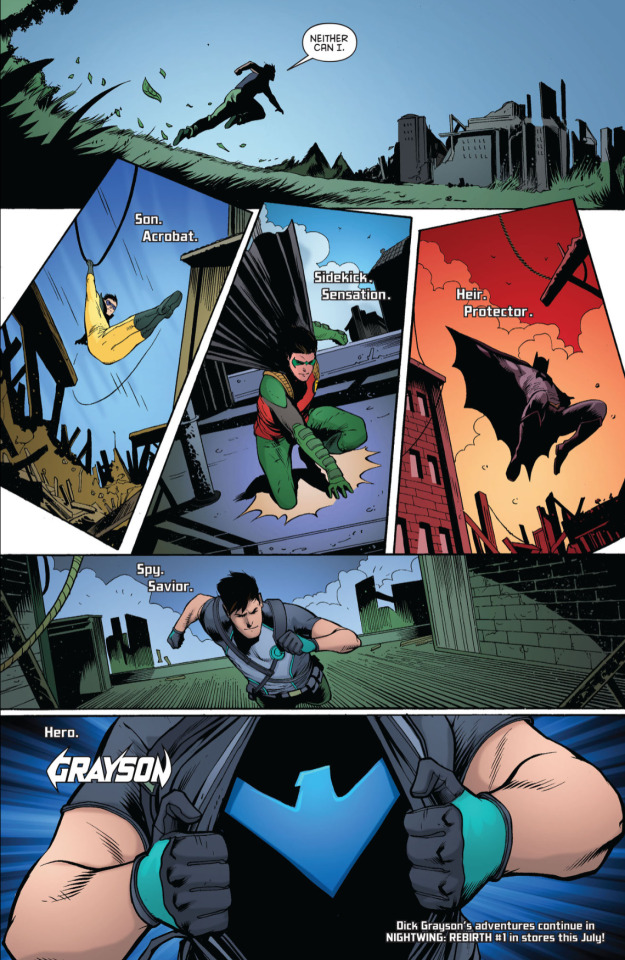
[King, Tom; Seeley, Tim, writers. Antonio, Roge, illustrator. Spiral’s End. Grayson. 20, e-book ed. DC Comics, 2016. Page 23]
And while that is undoubtedly true, each of the preceding nineteen issues elaborate on what traits can folded into a hero.
Dick is a storytelling, the first annual says;
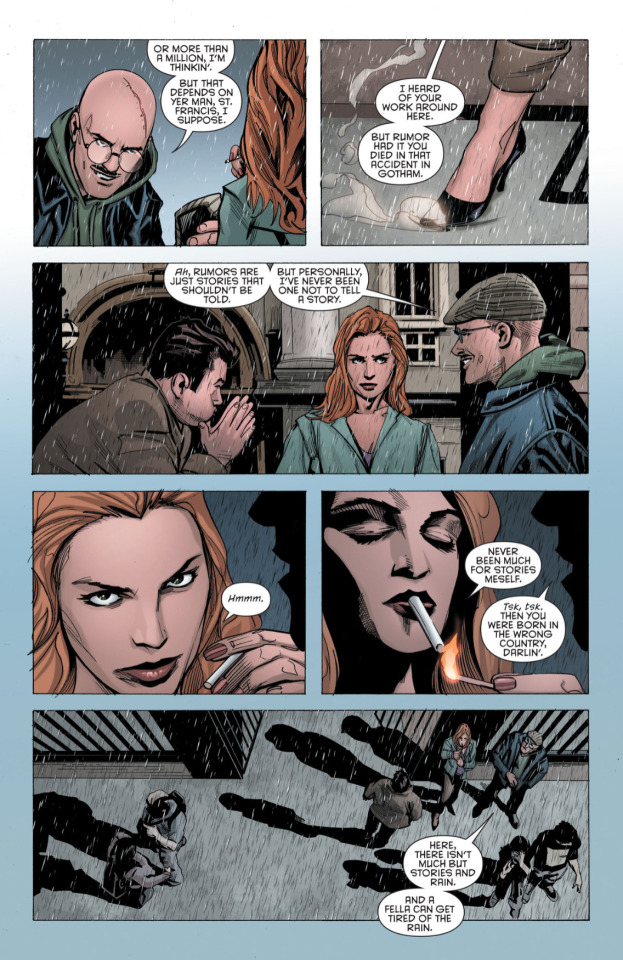
[King, Tom; Seeley, Tim, writers. Mooney, Stephen, illustrator. A Story of Giants Big and Small. Grayson. Annual 01, e-book ed. DC Comics, 2014. Page 11]
Dick is compassionate, the finale of Act I with the Paragon Brain proves;

[King, Tom; Seeley, Tim, writers. Mooney, Stephen, illustrator. Sin by Silence. Grayson. 07, e-book ed. DC Comics, 2014. Page 19]
Dick is a partner.


[King, Tom; Seeley, Tim, writers. Janin, Mikel, illustrator. Nemesis Part Two. Grayson. 10, e-book ed. DC Comics, 2014. Pages 23 to 24]
I want to focus a little bit on that last one. Dick, after all, was created to be the perfect partner. In 1940, he was the sensational character find that became Batman’s other half, the missing element to his mythos. Move further along his history, and a diverse number of writers were compelled to team Dick with other characters — he’s the Titans’ leader, the missing third piece of the World’s Finest, Batgirl’s love interest.
Grayson, too, is interested in exploring this aspect of Dick Grayson. In its first act, it pairs him up with Helena Bertinelli, whose more experience, tragic background, and darker personality is meant to mirror Batman.
Tom King: For me, it seems to make so much sense because basically she almost has that Batman female origin. She shares that origin that Batman and Dick have of having gone through this violent period when she was young and coming out of that a hero. We wanted to play with that. We wanted to play with the dichotomy of what Barbara is in Dick's life versus what Helena is in Dick's life. Helena's much closer to what Batman is and much closer to the father figure Dick was related to, so I think that creates immediate tension and fun stuff we can play with.
[Katzman, Gregg. "Interview: Tom King & Tim Seeley Talk GRAYSON." Yahoo! News, 4 Jan. 2015. Accessed 8 Dec. 2024.]
In act two, he is paired up with Tiger King of Kandahar. In fact, there is a theme of duality and partnerships throughout Grayson, showing that this is a critical aspect of who is Dick Grayson.
The exception to this is Grayson #05.
A self-contained story, Grayson #05 isolates Dick to get to the core of who he is. By contrasting Dick with Helena and Midnighter, placing him in the unforgiving vastness of an infernal desert, and calling forth the tale of Robin Dies at Dawn, Grayson #05 presents us with a man who does not give up and does not give in. Dick walks, even if he must walk, at times, alone. When laid bare, without the trappings of a superhero identity or of a partner, Dick Grayson, Grayson #05 says, is, at the core of his being, a survivor.
In this meta, I want to see just exactly how Grayson #05 does that through a close reading of the issue.
Now, without any further delay, let’s get started.
Let’s start with the cover.

[King, Tom; Seeley, Tim, writers. Janin, Mikel, illustrator. We All Die at Dawn. Grayson. 05, e-book ed. DC Comics, 2014]
Everything about this cover radiates heat. The sun is beaming down mercilessly, the spirals mimicking the sun rays, the color palette a strong orange that is highly saturated but not bright. The reader can feel how hot it is in this desert, and all around there's nothing but sand. Sand, sand everywhere the eyes can see, and in the center of the image, a lone black figure braving this infernal bare landscape.
This cover tells us not just the location of where the issue will be set, but it also shows that Dick will be alone out there. It tells us this will not be an action-filled story, but it will be one of survival. Man vs Nature, and nature does not discriminates with her ruthlessness. Dick stands alone facing the elements, but he stands. He is walking, he is not giving up. It would be so easy for this cover to have a close up of Dick's, Helena's, and Midnighter's exhausted expression as they each try to survive, but instead we just see Dick by himself, alone, walking. He does not give up, he does not give in. He survives.
The issue then opens in medias res, immediately presenting the readers with that main conflict: survival. It does not waste any time with unneeded exposition — after all, though Dick would hate this fact, we as readers do not need to know the name of the mother who is dying; we do not need to know the details of Minos’ mission before it all went wrong; we don’t even need to know how Midnighter managed to track Dick and Helena. All we need to know is that Dick and Helena, and Midnighter are all after the Paragon Heart, which belongs to the, as of this page, unborn baby; that ARGUS somehow tracked Midnighter who was fighting Dick for the Heart; and that mid-fight the mother went into labor.
There's an elegance in the way everything is conveyed so well and so quickly in this one page. It's brilliant storytelling from both a writing and a visual stand point.

[King, Tom; Seeley, Tim, writers. Janin, Mikel, illustrator. We All Die at Dawn. Grayson. 05, e-book ed. DC Comics, 2014. Page 01]
As they crash into the desert, the mother passes away. ARGUS is gone, but our trio and the newborn baby girl are faced with a mightier enemy: The desert. The nearest town is days away, they do not have a lot of supplies, they do not have how to call for help. Here, we’re faced with this issue’s main question: Can they survive this? The answer seems to be resounding “no.”
Let’s take a look at how each of the characters approach this situation.
Helena is pragmatic. She is thinking of the mission, but her expression is troubled. She doesn't see a way out of this. She knows they have to survive long enough for Spyral to eventually find them, but the odds are against them. Given the fact she’s injured, it’s unlikely she’ll ever make it out of this desert. Still, that does not mean she’ll fall into despair. She'll do what needs to be done, but she knows this is not something they can easily get out of. If she goes down, she'll go down fighting. Like I said, she’s pragmatic.
Midnighter, on the other hand, is a pessimist. He is jaded. Why bother trying? Midnighter is a nihilist. “We’re dead,” he says not once, but twice.
Then we have Dick. Beautiful Dick, he holds the baby in his arm like she's the most precious thing in the world. And in this moment, she is. His reply to Midnighter is telling. They aren’t dead. They can't be, because if they are dead, then so is she, so death is not an option. It's not a question of what is practical, of what the mission is, of what the odds are. It's not about being an optimist, either. It's simply about her. She is all that matters and she is entirely dependent on them, so they can't be dead. They cannot let her die, this little innocent child who is not even an hour old. So what will they do instead? They’ll walk. They’ll survive.

[King, Tom; Seeley, Tim, writers. Janin, Mikel, illustrator. We All Die at Dawn. Grayson. 05, e-book ed. DC Comics, 2014 Page 02-03]
The next page displays what will become the brilliant standard for this issue — open skies, sand, and small figures walking. Everything about it conveys this vastness that is so oppressive in its openness. It's the majesty of Mother Nature.
Note how tiny the figures are. Note how Dick leads the other two, not by a little, but by a lot. In his arms Dick holds the baby, nurses her with the formula from the mother’s bag. In the pages we see Helena struggling, Midnighter drinking water and shedding away his clothes, but Dick remains stoic. He leads, separated — isolated, distant — from the rest, determined, disappearing into the far orange of the page.
In this, we see Dick’s silent determination. It’s notable that he is not trying to make light of the situation through humor. Instead, he is silent. And he walks.
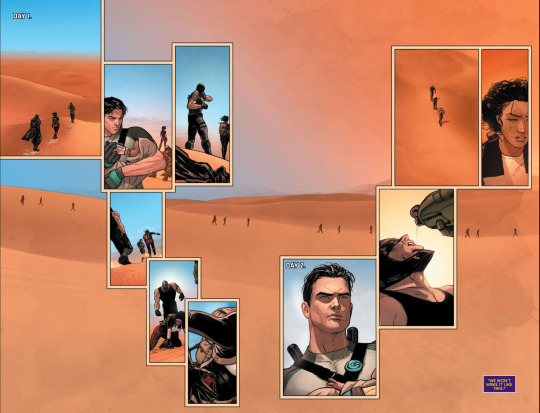
[King, Tom; Seeley, Tim, writers. Janin, Mikel, illustrator. We All Die at Dawn. Grayson. 05, e-book ed. DC Comics, 2014. Pages 04-05]
As the story continues, Midnighter’s pessimism deepens. It is notable that this issue is the first time Dick and Midnighter have seen each other since Grayson #01. And what does Midnighter do? He lashes out at Dick by revealing he knows who Dick is. This calls back to Forever Evil, where Dick’s identity was revealed to the world. Midnighter is weaponizing Dick’s trauma against him, trying to draw a reaction out of Dick. Not only that, he says that they only way to survive is to kill the baby and use the Paragon Heart. Otherwise, the odds are not in their favor, and he deems this "just walk" strategy is pointless. This is how Midnighter copes with the hopelessness of their situation — he dwells on the negative and lashes out.
Helena reacts to Midnighter by subduing the threat, but she doesn’t comment on his defeatist attitude. Nor on his plan. She is, again, practical. She won’t say they’ll make it, but she won’t allow Midnighter to pose a threat to the mission.
Dick, though… Not once does Dick acknowledge Midnighter’s taunting. Not once, not even to defend the baby. A weaker writer would have tried to get Dick to empathize with Midnighter, to tell him again that they're not dead yet, that they just need to keep trying. Instead, Dick’s refusal to even look at Midnighter shows how he won't even acknowledge the possibility of not surviving. His focus, instead, is all on her. That is what is driving him so that is what has his entire attention. Midnighter's temper tantrum is not even worth his time. Not when her survival is at stake.
I also want to take a moment to take in the environment. In this scene, the first panel shows how tiny the three of them are in the vast desert, the beautiful sky expanding above them. Mother Nature, the issue seems to say, is beautiful, worthy of awe. It is big, bigger than any human. More powerful, too. It is a challenge unlike any Dick has ever or will ever face. It cannot be charmed by him, it cannot be fought against, it cannot be conquered. It is not cruel or evil, either. It simply is, bare and uncomplicated, honest at all times. To survive her, Dick must also be the barest, least complicated version of his self.
While writing this, I often felt myself hesitating when writing about the conflict between Dick and desert. Phrases like “go against the desert,” often came to my tongue, and I had to swallow them back due to how wrong they felt. To “go against” someone (or something) is to have an antagonistic, adversarial relationship, and I’m not sure that is incredibly accurate to this scenario. The desert is indifferent towards Dick and the others. Midnighter speaks of fighting, of winning, of conquering this challenge, but Dick, by contrast, is quiet. He is not trying to “win” against the desert. That is not the right frame of mind. Rather, he is simply trying to survive.
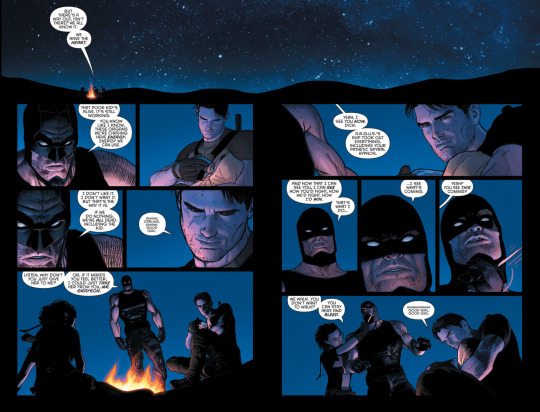
[King, Tom; Seeley, Tim, writers. Janin, Mikel, illustrator. We All Die at Dawn. Grayson. 05, e-book ed. DC Comics, 2014. Pages 06 - 07]
As time passes, Midnighter continues to talk. To taunt. His negative attitude doesn’t light up, and he is still trying to get a reaction out of Dick. Here we see that Midnighter is perhaps not fully comfortable with his enhancements, like he doesn't see himself as fully human because of them. He resents them even as he trusts his enhancements more than he trusts his own abilities. He says he sees all outcomes and there are none where they survive this. Not as humans. Not without the Heart.
Note how Midnighter presents their situation as not about being tough, but about how much energy you have. This framing seems to reject the idea of survival — of “toughing it out” — and instead looks at their situation as one of victory and defeat — you have to have enough energy to make it out of the desert, and in doing so, you’ll be victorious.
Yet, Midnighter predicts himself to outlast Dick, but in reality, he falls before Dick does. This begs the question: Was Midnighter right? Must you defeat the desert and win against it in order to win?
Personally, I believe the story is saying “no.” This is not about victory and defeat, but about survival. And to survive, one must lay themselves bare of foolish things such as pride and ego. To survive, you must dig deeper within yourself, and find something that will allow you to not go against mother nature, but to continue walking along side her.
Dick has found his something deep within himself. That something is his compassion. Helena collapses, and Dick leaves with her his shirt, laying himself bare. Yet, despite his fallen partner, his priority is still the baby girl. He will survive for her, and in this action we see the depths of Dick’s compassion for others. He continues to walk. He continues to survive.
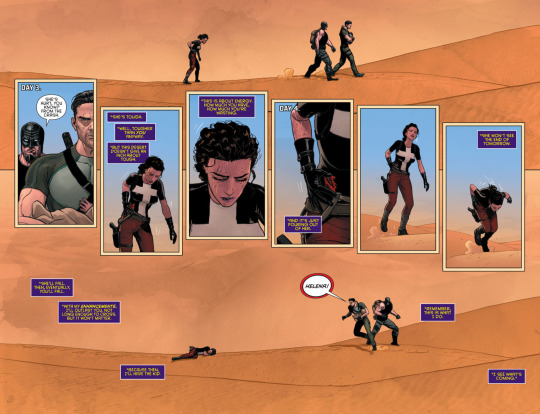

[King, Tom; Seeley, Tim, writers. Janin, Mikel, illustrator. We All Die at Dawn. Grayson. 05, e-book ed. DC Comics, 2014. Pages 08-10]
Finally, after days, Midnighter is confronted with the true force that is Dick Grayson. He was so certain he was going to outlast Dick. “I have… My… Enhancements. I have powers,” he struggles to say. But what does Dick have? How can a simple man continue to go against these conditions?
This page shows how deeply Midnighter underestimated Dick’s humanity and his compassion. Dick is not a superpowered individual, no, but Dick’s determination is unlike at other. This is who he is… Someone who walks.
Dick is a survivor. When Dick was a small boy, he lost his entire world in a traumatic act of violence. From the moment those ropes snapped and the Flying Graysons plunged to their deaths, Dick became a survivor — someone who had to figure out how to walk forward when everything seemed lost. And Dick did it.
If I can go on a bit of a tangent here, I’ll say that I really dislike whenever child heroes are characterized as child soldiers, be it by fans or by canon writers. This reading is, in my opinion, incredibly lazy and displays a lack of understanding of what superhero identities are meant to stand for. We can discuss the traumas that come along with being a child hero, but to dismiss it as a universally bad thing and equating to the real world horror of child soldiers ignores the fact that this is a fictional world in which the fantastical concepts act as metaphors for larger ideas.
Robin is not a child soldier. Robin, much like Batman, is a response to trauma. Specifically, Dick’s Robin is a response to the trauma of being a survivor of violent crime, and Robin demonstrates how a victim can regain agency and transform their tragedy into an empowering narrative. As Steve Braxi points out in his On Superman, Shootings, and the Reality of Superheroes essay, Batman “transform[s] trauma into will power,” and Dick, whose story is meant to mirror that of Bruce’s, does the exact same through Robin. Through Robin, Dick is able to not only find justice for his parents, but he is also to help other survivors like him. And that is what allows him to keep on walking.
This is what Grayson #05 demonstrates. It strips away the metaphor of the hero identities and the distraction of partnerships, laying Dick out bare and showing that as long as he can help someone, as long as he has his compassion, Dick Grayson can survive anything.
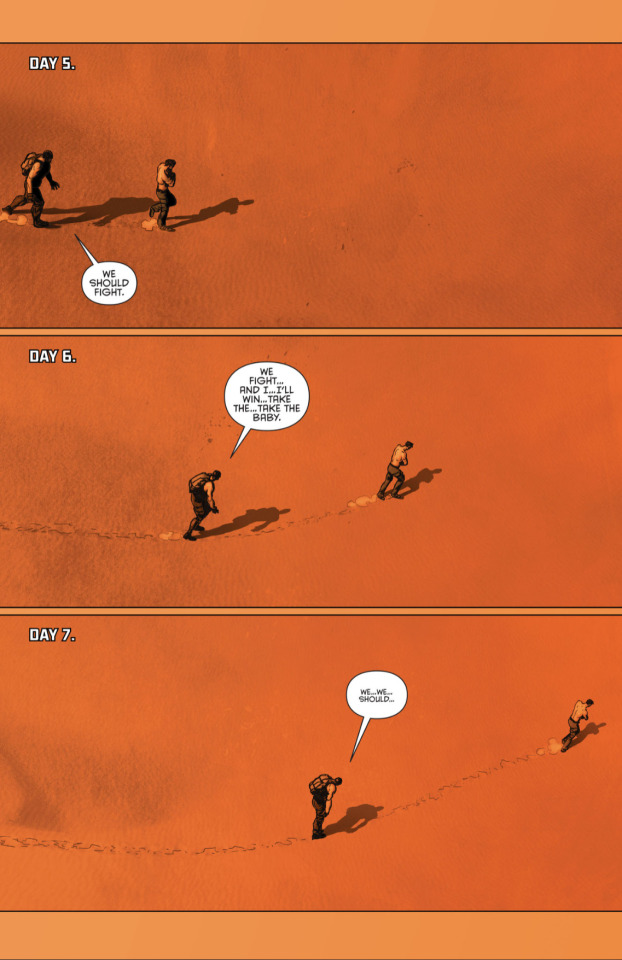

[King, Tom; Seeley, Tim, writers. Janin, Mikel, illustrator. We All Die at Dawn. Grayson. 05, e-book ed. DC Comics, 2014. Pages 12 - 13]
In the following page, the vastness of the desert is contrasted with close up shots of the baby. We see Dick, so impossibly small standing against a large desert that disappears into the horizon, and ocean of sand and oranges, and we see the whole reason why Dick is still alive. The environment that may kill him is contrasted with the reason why he will survive.
“I’m here. I’m here,” Dick tells the baby girl as she ceases her cries. “I’m still here.”
He gets up… And he walks. The repetitiveness of the action throughout the issue emphasizes the slog of the immediate aftermath of a traumatic event, those moments when you realize time is progressing forward as it always had, but your mind and heart are still stuck in that one moment that changed your life forever. All Dick can do is walk, walk, walk, yet he is still lost in this vast desert, the trauma is still overwhelming him, there’s no end in sight… But he does have his reason for not giving up — his compassion allows him to continue onward.

[King, Tom; Seeley, Tim, writers. Janin, Mikel, illustrator. We All Die at Dawn. Grayson. 05, e-book ed. DC Comics, 2014. Pages 14 - 15]
Robin Dies at Dawn is the title of Batman #156. In this two part story Batman finds himself in an alien planet filled with threats. Robin saves him from sentient, walking plants, and after escaping, they find a giant stone idol that comes to life and begins chasing them. They manage to leap over a deep fissure and realize that if the stone idol were to do the same, the unstable down would crumble and the stone idol would fall, securing their safety. As they wait for the idol, they see that it, too, realized the ground was unstable and it tries to figure out a safer passage to the other side. That’s when Robin provokes the stone idol, who, in fury, grabs a boulder to throw at Robin. Before it can do it, the floor crumbles and it falls, but boulder still hits Robin and kills him. Later, it is revealed that this was a hallucination induced by an experiment Batman subjected himself to meant to study the effects of loneliness in astronauts. Through the following days, Bruce has occasional hallucinations of alien creatures putting Dick in danger. It isn’t until Dick’s life is threatened by the Gorilla Gang that Bruce is able to “overcome” the lingering effects of the experiment, the threat to Dick’s life being enough to “shock” him back to normal.

[Finger, Bill; Boltinoff, Henry; Schiff, Jack, writers. Moldoff, Sheldon; Boltinoff, Henry, illustrators. Robin Dies at Dawn. Batman. 156, e-book ed. DC Comics, 1963. Page]
To the baby girl, Dick recounts this Golden Age story as if it were a dream, focusing on the part where the stone idol kills him with the boulder. In this tale, we go back to Robin, Dick’s first survival mechanism, and to the first person who first showed him compassion and to whom his survival was paramount — Batman.
Though so far Dick has rejected the idea of victory vs defeat, he presents the baby with a scenario where he is faced with such a conflict. Yet, in this case, to “go up against” the enemy is to call them forward so they will fall. Dick’s taunting leads the stone idol to it’s defeat, and this is the point which Dick says he wants the baby girl to focus on. You must welcome danger, he seems to say, and face it head on. You must walk forward instead of running away.
Yet, it is notable that the enemy is not the only one who is defeated in this story. After all, Dick “dies” at dawn. This is what Dick doesn’t want the baby to focus on, but I think it’s important in understanding this idea of survival. In the story, Dick sacrifices himself so Batman can escape. He goes up against an enemy, he achieves victory, but he does not survive. But, crucially important, Batman does.
This paints a picture where Dick's survival and his victory are not one and the same. Not the way Midnighter seemed to have believed. While Dick’s compassion is intrinsically tied to his status as a survivor of violence, this story seems to indicate that Dick will readily relinquish his own survival for the sake of someone else. In the framing of victories and defeats, other people’s safety -- other people's survival -- is Dick’s “win” condition.
This, I believe, demonstrates how Dick's compassion allows him to pass own his survivor status to others, even at the cost of his own life. By shielding them and giving them the opportunity to move past a trauma, Dick creates other survivors. He becomes their protector, their patron saint.

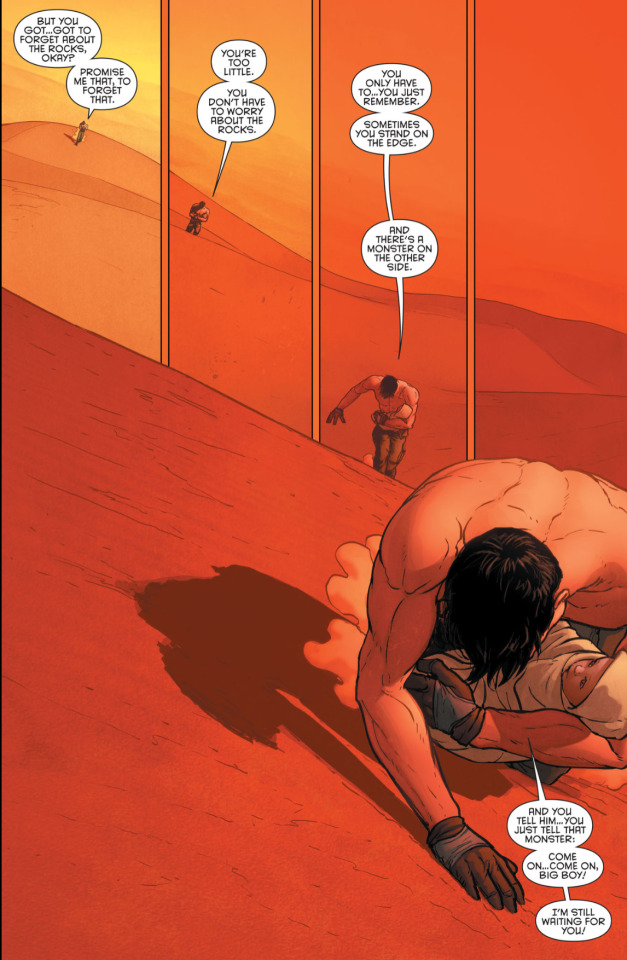
[King, Tom; Seeley, Tim, writers. Janin, Mikel, illustrator. We All Die at Dawn. Grayson. 05, e-book ed. DC Comics, 2014. Pages 16 - 18]
Dick Grayson is a lot of things, and he has numerous qualities. He is a partner, a hero, and a friend; he’s good, he’s funny, and he’s brave. While all of those are important aspects of his character, they can also distract from one characteristic that is crucial to Dick’s genesis.
Before he was Agent 37, before he was Nightwing, before he was Robin, Dick was a survivor. Having survived violence, Dick used his compassion to transform his trauma into power. Grayson #05 isolates Dick from the world, putting him in a dangerous and revealing desert to expose his ability to survive through his compassion. This, the story says, is who Dick at the core of his being, when stripped away from the distractions of partnerships and superhero metaphors. This is who Dick Grayson is: He is a man who walks.
Bibliography:
Braxi, Steve, “On Superman, Shootings, and the Reality of Superheroes” Comics Bookcase, September 2021
Finger, Bill; Boltinoff, Henry; Schiff, Jack, writers. Moldoff, Sheldon; Boltinoff, Henry, illustrators. Robin Dies at Dawn. Batman. 156, e-book ed. DC Comics, 1963
Katzman, Gregg. "Interview: Tom King & Tim Seeley Talk GRAYSON." Yahoo! News, 4 Jan. 2015. Accessed 8 Dec. 2024
King, Tom; Seeley, Tim, writers. Janin, Mikel, illustrator. We All Die at Dawn. Grayson. 05, e-book ed. DC Comics, 2014
King, Tom; Seeley, Tim, writers. Mooney, Stephen, illustrator. A Story of Giants Big and Small. Grayson. Annual 01, e-book ed. DC Comics, 2014
King, Tom; Seeley, Tim, writers. Mooney, Stephen, illustrator. Sin by Silence. Grayson. 07, e-book ed. DC Comics, 2014
King, Tom; Seeley, Tim, writers. Janin, Mikel, illustrator. Nemesis Part Two. Grayson. 10, e-book ed. DC Comics, 2014
King, Tom; Seeley, Tim, writers. Antonio, Roge, illustrator. Spiral’s End. Grayson. 20, e-book ed. DC Comics, 2016
King, Tom; Seeley, Tim; Tynion IV, James, writers. Janin, Mikel; Hetrick, Meghan; Garron, Javier; Lucas Jorge, illustrators. Setting Son. Nightwing. 30, e-book ed. DC Comics, 2014
82 notes
·
View notes
Text
LAYLA MULLIS ✶ 𝓑𝗘𝗧𝗧𝗘𝗥 𝗖𝗥



﹙🧸ྀི﹚ LAYLA LOTTIE MULLIS is the internet's favorite amateur filmmaker, sarcastic internet commentator, and deadpan podcast host. she is known for her youtube interview show, the b8ll﹙the eight ball﹚, where she hosts many of the twenty-first century’s heart throbs, rappers, and internet personalities.
﹙📌﹚ two thousand twenty-five // cincinnati, ohio
layla was born november fifteenth, two thousand and six in northern ohio. her first glimpse at fame was in two thousand and nineteen when a viral tweet led to her gaining eleven thousand followers in one night. she would then begin her youtube career as a freshman in high school. back then her content was a variety of vlogs and baking challenges with her friends. today her content had transitioned into video essays and discussions on history. she also started her youtube talk show the b8ll in the fall of two thousand and twenty-four. the talk show has been a resounding success, acting the attention of fans who want to know more about their favorite icons.
﹙ᥫ᭡﹚ college basketball!jason todd ﹙best friends to lovers / soulmates﹚
layla and her long-term boyfriend, jason, met way back in the fourth grade when she moved to his city. the two bonded over fidget spinners, a staple of two thousand and sixteen. layla recalls he had an awful shaggy haircut and always wore a pair of awful cargo shorts. jason recalls her wearing her long hair in a terrible ponytail every day. but looking back at the pictures of them during the last day of fourth grade the duo is quite adorable. in said photo, they were both wearing white t-shirts with their friends and classsmates' colorful signatures all over them. she does not remember the first impression she had of him, but she does remember the first time she knew she was crushing. she retells a story of recess in the fifth grade and him picking her first for kickball. it was the first time she was enamored with him. and only six years later, the two would get together.



#shiftblr#shifting#shifting blog#reality shifting#shifting realities#jason todd#jason todd x reader#jason todd x you#© laylasverse .#betterreality.com#reality ꫂ᭪ introduction
68 notes
·
View notes
Text
writer x matt boards 🐇🩰🦢🎀🍂🪵🌑🎮


redhead, nineteen, law student, bookworm, loves pink and bows, ballet dancer, collects jellycats, fall lover, sambas enthusiast, hopeless romantic, gracie abrams girl, atwtmvftv, lip gloss, shopaholic, introvert, canadian.
brunette, twenty-one, youtuber, reads sometimes, loves blue, fall lover, likes jellycats, video game enthusiast, introvert, fashion icon, mental health advocate, clairo fan, tattooed, american.
a/n: maybe one day i’ll do a face reveal, but for now you’ll have to use this as reference!
55 notes
·
View notes
Text
A Beautiful Story of Life
Shared with me by a friend.
The first day of school our professor introduced himself and challenged us to get to know someone we didn’t already know.
I stood up to look around when a gentle hand touched my shoulder. I turned round to find a wrinkled, little old lady beaming up at me
with a smile that lit up her entire being.
She said, “Hi handsome. My name is Rose. I’m eighty-seven years old. Can I give you a hug?”
I laughed and enthusiastically responded, “Of course you may!” and she gave me a giant squeeze.
“Why are you in college at such a young, innocent age?” I asked.
She jokingly replied, “I’m here to meet a rich husband, get married, and have a couple of kids…”
“No seriously,” I asked. I was curious what may have motivated her to be taking on this challenge at her age.
“I always dreamed of having a college education and now I’m getting one!” she told me.
After class we walked to the student union building and shared a chocolate milkshake. We became instant friends. Every day for the
next three months, we would leave class together and talk nonstop. I was always mesmerized listening to this “time machine” as she shared her wisdom and experience with me.
Over the course of the year, Rose became a campus icon and she easily made friends wherever she went. She loved to dress up and she reveled in the attention bestowed upon her from the other students. She was living it up.
At the end of the semester we invited Rose to speak at our football banquet. I’ll never forget what she taught us.
She was introduced and stepped up to the podium. As she began to deliver her prepared speech, she dropped her three by five cards on the floor. Frustrated and a little embarrassed she leaned into the microphone and simply said, “I’m sorry I’m so jittery. I gave up beer for Lent and this whiskey is killing me! I’ll never get my speech back in order so let me just tell you what I know.”
As we laughed she cleared her throat and began, “We do not stop playing because we are old; we grow old because we stop playing.
There are only four secrets to staying young, being happy, and achieving success. You have to laugh and find humor every day. You’ve got to have a dream. When you lose your dreams, you die. We have so many people walking around who are dead and don’t even know it!There is a huge difference between growing older and growing up.
If you are nineteen years old and lie in bed for one full year and don’t do one productive thing, you will turn twenty years old.
If I am eighty-seven years old and stay in bed for a year and never do anything I will turn eighty-eight.
Anybody can grow older. That doesn’t take any talent or ability. The idea is to grow up by always finding opportunity in change.
Have no regrets.
The elderly usually don’t have regrets for what we did, but rather for things we did not do. The only people who fear death are those with regrets.”
She concluded her speech by courageously singing “The Rose.”
She challenged each of us to study the lyrics and live them out in our daily lives.
At the year’s end Rose finished the college degree she had begun all those years ago. One week after graduation Rose died peacefully in her sleep.
Over two thousand college students attended her funeral in tribute to the wonderful woman who taught by example that it’s never too late to be all you can possibly be.
These words have been passed along in loving memory of ROSE.
REMEMBER, GROWING OLDER IS MANDATORY. GROWING UP IS OPTIONAL.
“We make a Living by what we get, We make a Life by what we give.”
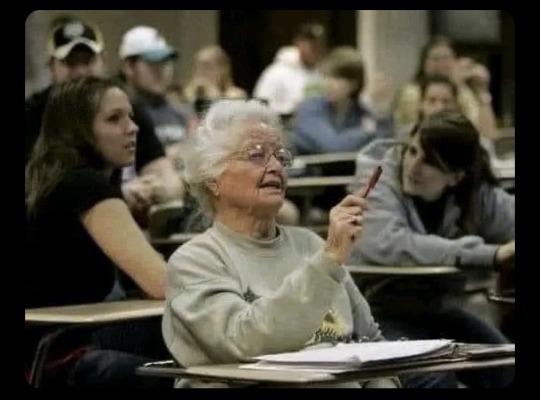
203 notes
·
View notes
Text

source - https://twitter.com/CalltoActivism
I absolutely love this story…….. It made me cry.
"An 87 Year Old College Student Named Rose The first day of school our professor introduced himself and challenged us to get to know someone we didn’t already know.
I stood up to look around when a gentle hand touched my shoulder. I turned round to find a wrinkled, little old lady beaming up at me with a smile that lit up her entire being.
She said, “Hi handsome. My name is Rose. I’m eighty-seven years old. Can I give you a hug?”
I laughed and enthusiastically responded, “Of course you may!” and she gave me a giant squeeze. “Why are you in college at such a young, innocent age?” I asked.
She jokingly replied, “I’m here to meet a rich husband, get married, and have a couple of kids…”
“No seriously,” I asked. I was curious what may have motivated her to be taking on this challenge at her age.
“I always dreamed of having a college education and now I’m getting one!” she told me. After class we walked to the student union building and shared a chocolate milkshake.
We became instant friends. Every day for the next three months, we would leave class together and talk nonstop. I was always mesmerized listening to this “time machine” as she shared her wisdom and experience with me.
Over the course of the year, Rose became a campus icon and she easily made friends wherever she went. She loved to dress up and she reveled in the attention bestowed upon her from the other students. She was living it up.
At the end of the semester we invited Rose to speak at our football banquet. I’ll never forget what she taught us.
She was introduced and stepped up to the podium. As she began to deliver her prepared speech, she dropped her three by five cards on the floor. Frustrated and a little embarrassed she leaned into the microphone and simply said, “I’m sorry I’m so jittery. I gave up beer for Lent and this whiskey is killing me! I’ll never get my speech back in order so let me just tell you what I know.”
As we laughed she cleared her throat and began, “We do not stop playing because we are old; we grow old because we stop playing. There are only four secrets to staying young, being happy, and achieving success.
1) You have to laugh and find humor every day.
2) You’ve got to have a dream. When you lose your dreams, you die.
We have so many people walking around who are dead and don’t even know it!
3) There is a huge difference between growing older and growing up.
If you are nineteen years old and lie in bed for one full year and don’t do one productive thing, you will turn twenty years old.
If I am eighty-seven years old and stay in bed for a year and never do anything I will turn eighty-eight.
Anybody can grow older.
That doesn’t take any talent or ability.
The idea is to grow up by always finding opportunity in change.
4) Have no regrets.
The elderly usually don’t have regrets for what we did, but rather for things we did not do. The only people who fear death are those with regrets.”
She concluded her speech by courageously singing “The Rose.
She challenged each of us to study the lyrics and live them out in our daily lives. At the year’s end Rose finished the college degree she had begun all those years ago. One week after graduation Rose died peacefully in her sleep.
Over two thousand college students attended her funeral in tribute to the wonderful woman who taught by example that it’s never too late to be all you can possibly be.
When you finish reading this, please send this peaceful word of advice to your friends and family, they’ll really enjoy it!
These words have been passed along in loving memory of ROSE.
REMEMBER, GROWING OLDER IS MANDATORY. GROWING UP IS OPTIONAL.
We make a Living by what we get,
273 notes
·
View notes
Text
Nissa Revane, William Wordsworth, and Me

Introduction:
We are not isolated individuals but an interconnected web. Part of embracing green's philosophy is understanding the importance of how each of us figures into the lives of the others. Grasping the role this larger group plays is a vital piece in understanding how the world works. - Mark Rosewater: “It’s Not Easy Being Green Revisited” … Therefore am I still A lover of the meadows and the woods And mountains; and of all that we behold From this green earth; of all the mighty world Of eye, and ear,—both what they half create, And what perceive; well pleased to recognise In nature and the language of the sense The anchor of my purest thoughts, the nurse, The guide, the guardian of my heart, and soul Of all my moral being. - William Wordsworth: “Tintern Abbey” How wonderful there should be a thing we don't yet know. - Magic Creative Team: “Renewal”
What do Nissa Revane, elf animist who had a good run in the 2010's as Magic’s iconic green planeswalker, William Wordsworth, nineteenth century British poet and the godfather of English Romanticism, and I, a mentally ill librarian who spends all his free time playing a children’s card game, all have in common? Not much, really. I’m neither a lesbian that wields earth-shaking magic nor am I the founder of a poetic movement that English majors still fawn over. However, thankfully for me, the human experience transcends time, gender, sexual preference, and even reality. There’s a lot to learn from both fiction and poetry, and I’m nothing if not a curious student. In particular, though, I’d like to talk about transitions.
The past couple of years for me have been packed full of constant transitions: I had an emergency move away from the city I had built a life in, I finished a master’s degree in library science, and I began the long, arduous process of changing careers. Not every transition has been so traumatic, though, as I am also now in a joyful, peaceful relationship and have finally achieved a modicum of financial stability on my own terms.
Needless to say, these transitions have had me feeling introspective (even more so than usual), and I have found myself seriously wondering about my place in the world. That probably sounds dramatic (well, if the shoe fits), but as an elder millennial who was around to witness when the first acorn fell from the first tree and the first scene boy put on girl jeans to pair with his trucker’s hat, I honestly just kind of gave up on that brand of stability at some point; after all, I was fifteen on 9/11, nineteen and living in Louisiana when Hurricane Katrina hit New Orleans and washed away whatever trust I had left in our institutions, and twenty-one when the Bush-era recession nailed my post-undergrad job prospects into a coffin. Of course, at the risk of sounding like I’m trying to appeal to your sense of pity, I’ll admit that today’s generation coming of age during Trump and and Covid have probably had it worse than I did and have also proven themselves much stronger and more resilient than I ever was, but nevertheless, a swirling concoction of circumstances and terrible mental health habits left me feeling for decades that I’d never have a place in the world to call many own.
All that said, in my attempt to carve out a life for myself and discover my role within my larger community, I started rereading Wordsworth, Coleridge, and Keats (the poets of English Romanticism were my favorite discovery as a literature student and some of the only writers I have carried with me beyond academia), since their poetry also dealt in themes of self-discovery, memory, and transition (also, their poetry is broody and navel-gazing - something I definitely relate with). However, as a Magic: The Gathering Vorthos with basic forest brainrot, I was also struck on this reread just how close my own experiences and the themes of the Romantic Poets mirrored how my favorite green characters from Magic fiction navigate their world. At first, I felt that this is fairly low-hanging fruit, since on the surface, themes like “finding yourself in nature,” “the rejection of social norms,” “celebrating your connections,” etc. are common enough to be found in all sorts of literature. However, the more I thought about it and connected the dots in my head, the more I realized just how much green’s themes in modern Magic fiction, particularly as expressed through Nissa Revane, helped me understand my own place in the world.
Indeed, while this essay grew out of the concept of tracing the similarities between Green Magic and Romantic Poetry (not the most riveting read for most of you, I’m sure), this particular tale kind of grew in the telling (to loot a phrase from Tolkien) until it became my own personal journal of self-discovery. If the entire m.o. of my online presence didn’t already give it away, my love of Nissa Revane - planeswalker, animist, green mage, icon - colors most of my thoughts about Magic: The Gathering, and this is no different. Compiling Nissa’s arc throughout Magic’s Story, synthesizing it with the things I love the most about the Romantic poets, and letting it stew around in my brain for the last year highlighted something of vital importance to me: the message, one that weaves its way throughout Nissa’s entire narrative, that personal growth means learning that the definitions I have held onto for my whole life - of myself, of other people, of even nature and the universe itself - are but a narrow, small part of a greater whole; that embracing healthy connection with the world around me and seeking to understand my place within it helped change parts of me that I thought were intrinsic to my very nature and helped me bloom into the best version of myself.
Part I:

(me, trying to juggle graduate school and work)
Last year around this time, I found myself struggling. I was wrapping up my last full semester of my graduate program, failing miserably at balancing school and work, isolating myself from my friends because of how busy I was, and unhappy about living in Central Texas again after I swore I was done with the region. Throughout all of this, following Magic Story was a boon to my shocked nerves, though I rarely found time to follow it completely. It wasn’t pure joy, however, because as a result of stress mixed with the, at the time, untreated depression and anxiety, Nissa getting compleated - with “no way” of getting healed - during the “All Will Be One” story (not to mention that her tragic loss happened OFF SCREEN - the disrespect) severely bummed me out, so I tuned most the “March of the Machine” stories out to focus on wrapping up my semester. That is, I tuned it out until the final story, K. Arsenault Rivera’s “Rhythms of Life” was released in late March. Letting Chandra and a healed Nissa kiss at the end was a nice touch, but it was not for another month until we found out what happened to them after the climax of the Phyrexian stories.
When that month passed, however, on May 1, Grace P. Fong’s “She Who Breaks the World,” was released in tandem with previews for “March of the Machine: The Aftermath” products. Of course, I was going to like this story because I like Nissa and Chandra, and I have been a proponent of them being romantically involved since “Zendikar Resurgent,” but this story struck a deeper chord in me than I expected. I felt an immediate kinship with Fong’s representation of Nissa, a character who is also in a state of transition: in a place she doesn’t want to be, isolated from her friends and loved ones, and trying to redefine who she was after traumatic events left her floating listlessly throughout her world.
The events of “All Will be One” and “March of the Machine,” after all, were Nissa’s darkest hours in a life full of dark hours. Her mind enslaved and her bodily autonomy stolen from her, Nissa was forced to do things in service to the Phyrexian matriarch Elesh Norn that horrified her. However, due to the nature of Phyrexian compleation — having her mind and body altered on a genetic level — she performed these actions in the moment with fanatical zeal, even pleasure. We are told in the first episode of the March of the Machine arc, “Triumph of the Fleshless” that Nissa “is the finest gift the Planeswalkers have given Phyrexia. Even standing at Norn's side, she can steer Realmbreaker's attention. To say nothing of her combat capabilities. If things continued at this rate she might overtake Tamiyo as Norn's favorite new servant.” Later on in “She Who Breaks the World,” while Nissa is reflecting on this, she notes that the alterations the Phyrexians made to her “granted her the ability to unleash a call through the branches of the Invasion Tree and speak the glory of Phyrexia to every plane in the Multiverse. And right now, Nissa is disgusted with herself because—despite her friends' sacrifices, despite Chandra's sacrifices—part of her misses hearing those planes.”
On the other side of these events, Nissa is mostly healed from what the Phyrexians did to her (outside of a metal cage imprisoning her chest and some scarring on her limbs where metal was grafted on), her mind is returned to her own control, and she and Chandra are finally sharing mutual love and affection instead of being mired in “will they/won’t they” hell like they had been for nearly a decade of Magic Story. However, the trauma of knowing, remembering, and feeling intimately all of the terrible things she did understandably leaves her feeling like an outcast among loved ones, and to make matters worse, she is now with a planeswalker spark, meaning she got depowered significantly and can no longer go back to her beloved Zendikar, her homeworld that she has a close intimate connection with. All this is to point out that Nissa finds herself in a spot where she has to completely redefine who she is. Nissa took great pride in being animist; now, she cannot hear the voice of the planes and her magic is basically useless. Nissa had previously discovered meaning for herself being a member of the Gatewatch: traveling the planes doing good where can and making connections with new worlds and interesting people; now, she is trapped on a plane that does not listen to her among people she very directly harmed when her mind and body were not her own.
After a failed attempt to connect with the world of Zhalfir, Nissa begins to despair, believing that the planes have rejected her because all of the social connections she has made over the years. Nissa believes that “[s]he has spent so long connected to others that she has smothered her own connection to the Multiverse. Whether or not those bonds were made of her own volition, the planes have rejected her.” While she recognizes deep down, even if she can’t forgive herself for it just yet, that what happened while she was a Phyrexian wasn’t her fault, Nissa comes to believe that her original sin that led to this was in getting involved with the wider universe in the first place. She (and everybody who suffered from her actions as a Phyrexian) would be better off, she believes, if she had remained in her primordial, untarnished state of a champion of nature.
At this point in the narrative, Nissa’s experience reflects the way poets and writers of the Romantic Period mythologize their own world. Canadian literary critic and theorist Northrop Frye (a theorist who, truth be told, I disagree with in many respects, though his work on the Romantic Period is exhaustive and insightful) called this the “Romantic Myth.” In “A Study of English Romanticism,” Frye describes how the Romantic Myth delineates from traditional mythology:
In the older mythology the myth of creation is followed by a gigantic cyclical myth, outlined in the Bible, which begins with the fall of man, is followed by a symbolic vision of human history, under the names of Adam and Israel, and ends with the redemption of Adam and Israel by Christ. The two poles are the alienation myth of fall, the separation of man from God by sin, and the reconciling, identifying, or atoning myth of redemption which restores to man his forfeited inheritance. Translated into Romantic terms, this myth assumes a quite different shape. What corresponds to the older myth of an unfallen state, or lost paradise of Eden, is now a sense of an original identity between the individual man and nature which has been lost.
Ignoring, for a moment, the gender essentialism Frye uses, note how the lost Eden of the Romantic period was connection to nature itself. Joining society, spending precious hours having “dialogues of business, love, or strife” - all of these things are the sins that tear us away from our original, perfect self. William Wordsworth begins his “Ode: Intimations of Immortality” this way:
There was a time when meadow, grove, and stream, The earth, and every common sight, To me did seem Apparelled in celestial light, The glory and the freshness of a dream. It is not now as it hath been of yore;— Turn wheresoe'er I may, By night or day. The things which I have seen I now can see no more.
To the persona of Wordsworth’s poem, this sense of identity was lost in childhood; in Nissa’s head, she “smothered her own connection to the Multiverse” when she started to value her connections to other people — Chandra, the rest of the Gatewatch, Yahenni, and many others she let into her life — at the expense, apparently, of the natural world. What’s left for her except to turn back to nature and attempt to find herself again?
Part II:

(Nissa's oath to protect the life of "every plane" plays a huge role in her identity)
What does “finding herself” look like for Nissa, though? To answer that, let’s look at a few different things. Here, we’ll examine Nissa’s place as a green character in Magic’s color pie and pick apart the ludonarrative elements in Nissa’s card designs that informs how she approaches her idea of self.
Nissa is the only planeswalker of the original five Gatewatch to have cards that branch out to other colors. At heart, though, she is a green character. Even though she has some blue elements in her personality (curiosity) and black (the ambition to make her ideals reality, whatever the cost), Nissa’s heart is “green to the very door.”
In his near ten year old article, Mark Rosewater writes this about the philosophy of Green:
The natural order is a thing of beauty and has all the answers to life's problems. The key is learning to sit back and recognize what is right in front of you. Each individual is born with all the potential they need. The secret to a happy life is to recognize the role you were born into and then embrace it. Do what you were destined to do. The world is this elaborate system, and each one of us gets to play a part. And it's not something we have to guess about; it's imprinted on us, it's in our genes. Just look within.
It’s very easy to see Nissa in the first paragraph: even though she is a warrior out of necessity, she too craves peace and acceptance and this is revealed in one of her favorite hobbies: meditating. Nissa’s animist powers (more on that here) let her reach her consciousness into nature itself so that she can just exist among the wonders of life. Take note of this gorgeous passage near the end of “Renewal,” the last story of the Kaladesh block:
There were rivers in the air; they carried her like a mote of pollen. Great hearts were pounding in the deeps of the sky, singing slow symphonies of joy. Wordless, they expressed the sun breaking over the edge of clouds; the sharpness of stars over frosted peaks; the awareness of a new life growing within, nestled and patient, waiting for its first breath of radiance. She drifted bodiless among the singers, listening. Back and forth they called, echoing across cloud and current, composing shared dreams of weightlessness, rain, and memory. An eye the size of a house blinked. Radiant curiosity washed over her, like the return of sunlight from beyond the edge of all things. There is something new in our sky, it sang in language of sensation and vibrance; quickened heartbeats and quivering muscle; caught breath and a hundred shades of blue. How wonderful there should be a thing we don't yet know.
Nissa is an expert at recognizing “what is right in front of you,” though due to her connection to nature, “right in front of you” could mean just about anywhere on the plane itself.
To cycle back to Rosewater’s statement, however, it’s important to take consideration of the fact that a green character does not just treat the wonders of the natural world as a conduit for inner peace, they also believe that the “secret to a happy life is to recognize the role you were born into and then embrace it. Do what you were destined to do.” What does Nissa believe the role she was born into is? What drives her throughout much of Magic’s narrative?
To put it simply, Nissa believes that she is the champion of nature itself, the chosen one of Zendikar’s worldsoul. Whenever she planeswalks to a new world, she adopts the worldsoul of the plane as her own; the first thing she usually does when touching down on new earth is to attempt to connect with the soul of the plane. Throughout whichever story arc she takes part in, she usually comes to see herself as the voice of that particular world and acts as its champion as well.
Let’s take a look at the second Innistrad block, for example. Even though her role in this story is quite small, this template still applies. Jace, after unraveling the mystery of what was happening on Innistrad, goes back to Zendikar to fetch the rest of the Gatewatch to help stop the rise of Emrakul. As she planeswalks to the battlefield, the “hill rumbled slightly, the only herald of Nissa's arrival. She frowned as she knelt down, placing her palm against the ground. ‘The mana here is dark. Twisted. It's in the soil, the trees...Emrakul did some of this, but’…‘This is your first time to Innistrad, right? “Dark and twisted” is kind of a regular feature,’ Jace continued.”
Presumably at some point later on in the story, on the flavor text on the card Splendid Reclamation, Nissa says “No matter how much a plane has suffered, there is a way to restore it." Of course, this line appears nowhere in the story, but there has always been a conflict between what has been written in Magic fiction versus what is printed on the cards. Furthermore, it’s possible that this card was a bottom-up design with the mechanics designed first and Nissa pasted on later since there wasn’t another “green character who cares about lands” present during the battle against Emrakul. Either way, Nissa comes across as a character who sees herself as the champion of nature.
Nearly all other stories Nissa takes part in give her a similar arc. In "Amonkhet," she is the first to identify just how sick and distorted the world had become under Bolas’s influence, and after a trial with the ibis god Kefnet, she ends up believing that she set herself up as a rival to Bolas, able to manipulate the leylines and the gods attached to them just as efficiently as the dragon. During :War of the Spark," in a move that would earn her the disgust of the Selesnya guild, she animates Vito-Ghazi, the home of Ravnica’s worldsoul Mat'Selesnya, in order to fight against Bolas and the zombified gods. In "Zendikar Rising," Nissa’s journey takes front and center, with her conflict with Nahiri ending with Nissa as the one true savior and liberator of Zendikar. Her brief stint during the "Brothers' War" side stories end with Nissa swearing an oath to Gaea, the worldsoul of Dominaria, to personally destroy the Phyrexians herself, no matter the cost.
Even while she was a Phyrexian during “All Will Be One” and “March of the Machine” and her mind not her own, Nissa follows a similar arc, though a twisted variation: after her capture and transformation, Nissa becomes the voice of Phyrexia, as the card All Will Be One showcases, proclaiming the plane’s glory and, through manipulating Realmbreaker (likely the single largest and most powerful living thing in existence at the time), sending “Phyrexian perfection coursing across the Multiverse.”
You can certainly see Nissa’s confidence in her station as the champion of worldsouls multiverse-wide in her cards: “Nissa, Voice of Zendikar,” “Nissa, Who Shakes the World,” “Nissa, Ascended Animist,” etc. All of these designs showcase Nissa’s might as a master of land magic. Loyalty abilities on these cards almost always animate a land into a creature that can then fight alongside her. The most powerful variation of this ability was on “Nissa, Who Shakes the World”:

On a narrative level, however, what these abilities showcase is that Nissa during this era saw herself as less a friend to nature than a master of it.
Fast forward to the aftermath of the Phyrexian invasion and Nissa is in a much different place mentally, emotionally, and even physically. As Nissa struggles to (literally) bury the physical remnants of what the Phyrexians did to her body, she feels an immense sense of loss that stems from more than just guilt. Fong describes it this way:
[Nissa] felt cut off, lost in the Multiverse with no voice calling her home. Maybe no plane would hear her ever again. They'd all lost their sparks, but only Nissa still wanted to planeswalk. Even if her friends seemed to be moving on without her, she still cared about their happiness. So not wanting to bring down the spirits of their celebration, she excused herself.
I recall seeing a few half-hearted takes on social media after this story was released expressing frustration that Nissa spent so much time in this narrative grappling with the harm that was done to her rather than acknowledging guilt for the harm she inadvertently did to others. First of all, she clearly does feel guilt for the harm Norn wrought through her:
[Her] copper skeleton is covered in mangled spikes, and those spikes are covered in the dried blood of her friends. She rubs one, and dark residue flakes off on her fingertips. She wonders whose blood it was. Maybe Koth? Maybe Wrenn? Maybe Chandra? Chandra. She had hurt Chandra, almost killed her.
Secondly, exploring Nissa as a green character shows us that Nissa has lived her life believing firmly that she was alive for a purpose: to be the voice of nature and act as its most ardent champion. However, now worldsouls won’t speak to her and her magic barely works at all. Her spirituality that drives her and her magical might that allows her to act in service of that spirituality have been unceremoniously ripped away from her. Everything Nissa has ever believed about herself has come dramatically (and traumatically) crashing down.
Nissa is a character whose entire system of beliefs has now been obliterated by her experiences, and as mentioned in the previous sections, she believes it was because her original mistake was in seeking her identity in her relationships with people rather than with her relationship with nature.
I asked at the end of part one, what’s left for Nissa except to turn back to nature and attempt to find herself again? Perhaps, however, a more apt question to ask is what’s left for Nissa at all? Yes, she and Chandra are (mostly) on the same page about their feelings for one another and yes, she is alive and physically healthy (though weakened and scarred), but notice that even if Nissa despairs about what she has lost, she shows little desire to go “back” to nature. Even though she believes with absolute certainty that “the planes have rejected her,” she stays true to her duty as one of the stronger warriors left among the surviving Mirrans; when faced with decision to either explore the brand new omenpath or to help the survivors, Fong writes, “as much as Nissa loathes to abandon the portal, she knows Koth is right. As much as the war took from her, others have lost even more. They need to help first.”
Though separated by over two-hundred years and in different genres altogether, what Nissa is going through reminds me of what Wordsworth writes in “Tintern Abbey”:
I bounded o'er the mountains, by the sides Of the deep rivers, and the lonely streams, Wherever nature led: more like a man Flying from something that he dreads, than one Who sought the thing he loved. For nature then (The coarser pleasures of my boyish days And their glad animal movements all gone by) To me was all in all.—I cannot paint What then I was. The sounding cataract Haunted me like a passion: the tall rock, The mountain, and the deep and gloomy wood, Their colours and their forms, were then to me An appetite; a feeling and a love, That had no need of a remoter charm, By thought supplied, nor any interest Unborrowed from the eye.—That time is past, And all its aching joys are now no more.
You see, Wordsworth — like Nissa, like me, and probably like you at some point in your life — found himself in the late 1700’s grieving a deep sense of loss as everything he believed in came crashing down around him. Spellbound by the fervor of Revolution-era France, he lived on the continent for years and had a child with a woman he fell in love with there, but France’s tense political relations with his home country and the Revolution descending into the Reign of Terror forced him to return to Britain. Witnessing what he saw as his utopian beliefs plummet to irredeemable violence utterly broke him (on a personal note, I likely have a different view than Wordsworth on the merits of putting aristocrats to the guillotine, but that’s another essay entirely), and — like Nissa, like most of us — had to rebuild himself from the ground up.
What a relatable human story, right? As someone who is closer to forty than he is thirty, I have stumbled upon this crossroads multiple times in my life. Years ago, it involved disentangling myself from my evangelical upbringing and accepting the fact that, though my parents and (just to give them the benefit of the doubt) many of the religious adults who helped raise me had my best intentions in mind, instructing an impressionable, vulnerable, and anxious child that deep down in the center of his being he is evil and deserves eternal torment for the crime of being born was pretty fucked up. It took years of therapy, medication, and daily affirmations to finally feel good about myself. More recently, as alluded to, going through a tough breakup, wrapping up a master’s degree, and beginning the process of changing careers all within the span of roughly two years left me scrambling in my pursuit to create a new self to be a better fit for my new circumstances.
What choices did I make at this crossroads? What about Nissa or Wordsworth?
Part III:

The answer to that question is that the three of us (Nissa, Wordsworth, and I) all came to similar conclusions. This answer is two-fold, and I hope you’re not expecting some life-altering nugget of wisdom here, because — true to the heart of a green mage — the first lesson we learned is, quite simply, the art of acceptance: acceptance of the world that is, not the world that was or the future world our anxiety creates in our mind. Rosewater writes,
Green wants acceptance.
The other colors are all focused on how they'd change the world to make it better. Green is the one color that doesn't want to change the world, because green is convinced that the world already got everything right.
There is, of course, something to be said for improving your circumstances — especially if the environment around you is toxic — and the relentless ambition to mold your life into one you are happy with, but in Nissa’s case, what she needed most was to accept that she was living in a different world than was previously. Bereft of the planeswalker spark that gave her a sense of purpose and traumatized by remembering what she did when her body and mind were being puppeted by the Phyrexians, Nissa finally comes to understand and acknowledge her new place in her new world.
Early on in Fong’s “She Who Breaks the World,” Nissa attempts to connect her soul to the leylines of Zhalfir, but instead of basking in the orchestra of the planes, the music is drowned in all of the other songs that have influenced her, her tune “muffled by dozens of new, alien voices she recognizes and despises: the Eldrazi, Bolas, and finally, loudest, Phyrexia.” This leads to her belief that was discussed previously that her original sin was embracing human connection instead of remaining the voice of Zendikar’s worldsoul.
However, at the climax of the story, Nissa shares this struggle with Chandra when the two of them are trying to fight their way out of an impossible situation. A wild, out-of-control storm elemental was threatening the Mirran survivors of the Phyrexian invasion, and Nissa and Chandra were defending the populace against it. However, the two of them are not working well together, and the elemental manages to capitalize on their poor tactics and absorbs copious amounts of steam arising from a burnt baobab tree to become a colossal being whose head caresses the sky. After they get trapped in a hole with no way out, Chandra suggests a plan of attack reminiscent of the channel-fireball combo the two of them used to destroy Ulamog and Kozilek all the way back in “Oath of the Gatewatch,” and Nissa finally admits to Chandra that her magic no longer works and expresses her deep anxieties about why: “‘it's like my voice isn't my own,’” she admits. “‘Like it belongs to Phyrexia instead, like everything I've ever connected to is drowning me out.’”
Chandra, however, does not see it that way. Choosing, for once, to think before she talks (a skill she no doubt learned from her years around Nissa), eventually concludes “‘you know … you have good connections, too.’” She continues:
‘It's true—you did bad things while they had you. But everyone you've connected with over the years with the Gatewatch, we're just happy you're still here. With us.’ Chandra sets fire to a chunk of moist dirt that was about to fall on Nissa, turning it into a soft rain of ash. ‘With me.’ For the first time since she awoke in Zhalfir, Nissa smiles. Chandra, sweet Chandra, even if she doesn't realize it, has always understood and explained emotions better than Nissa ever could. Chandra continues, ‘Your connections aren't drowning your voice, Nissa. They're changing it into something new, maybe something even more powerful. Infinite voices, infinite possibilities, right?’
What Nissa needed was not to perform some kind dramatic penance or to reject society for asceticism once again but to simply accept that the world around her had changed, that she had changed. This fact is hammered home by the next section: agreeing to try connecting to Zhalfir’s worldsoul again,
Nissa closes her eyes. She retreats inward and listens for her inner voice. It's hard, much harder than before, but Chandra is dutifully helping her concentrate, blasting the falling rock away before it can reach her. Nissa is greeted by ringing deep in her ears, but she refuses to be deterred. With her connections in mind, she picks the static apart into unique melodies, the individual songs she picked up from all around the Multiverse. She arranges them, harmonizes them, and this time, when she calls to Zhalfir, her voice is amplified in chorus. She offers an apology. The plane answers. It too was cut off from everything it knew, from the connections it had made. It, too, was scarred by Phyrexia and is growing into something new. It forgives her, and Nissa can finally forgive herself. Magic floods her flesh, her blood, her bone. She hears Chandra laugh, delighted by their success.
It’s only through accepting that her life now is different from what is used to be, through confessing that her priorities had changed, through acknowledging that presence of others in her life had made her stronger, and most importantly, through forgiving herself for what’s she did when her mind wasn’t her own that Nissa is able to reconnect to the source of her magic and her joy.
Nissa learns to reinterpret her world in a new way. This can be seen in mechanical elements as well. Most of Nissa’s planeswalker cards have her manipulating lands, either by animating them into creatures to be controlled or by fetching them from the library. Nissa, Resurgent Animist, however - the first time she has been printed as a creature since the flip-walkers of 2015 - does not do any of those things. The text on this card reads:
Landfall — Whenever a land enters the battlefield under your control, add one mana of any color. Then if this is the second time this ability has resolved this turn, reveal cards from the top of your library until you reveal an Elf or Elemental card. Put that card into your hand and the rest on the bottom of your library in a random order.
The act of playing a land during the narrative of a game of Magic is the act of a planeswalker establishing a mana bond with a certain place in the multiverse. ‘Mana bond’ is a term almost never used in Magic fiction anymore, but as far as I know, it has not been retconned either. Even if not explicitly stated, there are nods to the act of creating mana bonds throughout the tie-in fiction. Look at this section from “Nissa’s Origin: Home,” for example:
As they picked their way deeper into the marshland, Nissa formed a connection with it. She saw the beauty in the moss-laden trees, felt the magic in the mists that rose up from the brackish waters, and swayed to the song of the swarms of lion flies that circled them. She never would have believed a bog had so much to offer.
In the narrative of a game, this paragraph would simply read “Nissa plays a swamp.” Explicit or not, establishing a mana bond with a particular piece of geography means that the planeswalker can, among other things, draw mana from that place no matter where in the multiverse they are. This is why, flavorfully, a player can play Ravnica shock lands alongside Tarkir fetch lands: in the narrative of a game, your planeswalker avatar has gone to these places and forged a bond with those pieces of land.
To cycle back to the card, however, instead of manipulating the land itself, having Nissa, Resurgent Animist alongside the player allows them to, firstly, hypercharge their link to the lands they play, giving the player extra mana for the act of forming connections with lands. Secondly, the player forming connections with as many lands as possible in a single turn (two in this case) allows Nissa to discover other creatures to fight alongside them. Instead of being the champion of all nature, Nissa now fights alongside nature as an ally rather than a general. This makes it all the more fitting that according to the “Aftermath Set Design” article published last year, the original name for this card during the design process was “Nissa, Friend to Nature.”
The journey Nissa goes on lets her reinterpret herself from champion to friend, but celebrating things others consider dark and reinterpreting the world in a way to showcase its beauty was close to the heart of many Romantic Poets as well. In “To Autumn,” John Keats celebrates the season of change, a season so often characterized as a time of preparation and vigilance for the coming winter. Keats writes,
Where are the songs of spring? Ay, Where are they? Think not of them, thou hast thy music too,— While barred clouds bloom the soft-dying day, And touch the stubble-plains with rosy hue; Then in a wailful choir the small gnats mourn Among the river sallows, borne aloft Or sinking as the light wind lives or dies
Keats argues that we should not characterize an entire season through the lens of humanity. Instead of pining for spring, we should live in the moment and appreciate what fall offers us. Similarly, Nissa learns to appreciate the current, sparkless season of her life with Chandra instead pining for the life that was.
Keats again argues this in “Ode to a Nightingale”; a creature poets often infuse with sadness is only that way, he argues, because of how it is interpreted:
Thou wast not born for death, immortal Bird! No hungry generations tread thee down; The voice I hear this passing night was heard In ancient days by emperor and clown: Perhaps the self-same song that found a path Through the sad heart of Ruth, when, sick for home, She stood in tears amid the alien corn
“Thou wast not born for death,” Keats writes, meaning that the nightingale is not infused with sadness by nature, but only because that’s the emotion humans have assigned to it. Nissa too learns to stop infusing her world with despair by labeling herself as powerless, damaged, and guilty, instead choosing to enjoy the moment she is in.
It is through accepting that age and experience has changed how he views the world that Wordsworth also is able to move forward. Instead of treating nature as his “all in all,” he writes,
For I have learned To look on nature, not as in the hour Of thoughtless youth; but hearing oftentimes The still sad music of humanity, Nor harsh nor grating, though of ample power To chasten and subdue.—And I have felt A presence that disturbs me with the joy Of elevated thoughts; a sense sublime Of something far more deeply interfused, Whose dwelling is the light of setting suns, And the round ocean and the living air, And the blue sky, and in the mind of man
Instead of nature being the only thing in his life, nature is now simply one of the important things in his life, a feeling too that Nissa wrestles with. Instead of hearing only the song of the leylines, the worldsoul’s tune is now just one of many melodies she sings.
Acceptance is a song I too have been singing. As a staunch leftist, living in Central Texas is not particularly suited to me, and I have left here once before. Swearing never to move back, I moved away in the 2010’s for a relationship with a woman that ended up failing some years later. Financially desperate, broken emotionally, in the middle of a graduate degree, and not having anywhere else to go, I moved back to Waco to live cheaply, wrap up my online library science degree, and re-constitute my support network. It was not easy reacclimating to life here. Though I love the people I know in the area, I felt then and still feel now haunted by the ghosts of old memories, all of which had become flavored by loss. After I finished my degree in mid-2023, it did not get much better; even though I’d become ambitious and committed to looking for work elsewhere, the job market for librarians kept me here (entry-salary positions asking for five years of experience and all that). Note that for as much as change scares me, I had dared to face those fears and dared to dream only for it to come to nothing - not an uncommon story these days, I’m afraid.
Now, however, I’m working at the public library in Temple, Texas (close enough to Waco to commute) and settled myself down for the time being. Composing a new rhythm for my life has drastically helped heal the damage that almost three years of rejection, chaos, instability, depression, and anxiety wreaked on me, but that journey began, I think, with acceptance. I’m not currently where I want to end up, but despite what my anxiety and self-doubt tell me, that’s okay. I had to accept that this is where I am at in my life right now, confess that my ambitious priorities were probably going to be achieved at a much slower rate than I had hoped, acknowledge that people in my life made me stronger, and most importantly, forgive myself for the many mistakes I made over the past three years. Only then was I able to truly move forward.
The second lesson we all learned was to embrace connection with people in our lives rather than reject it. In Nissa’s case, as previously alluded to, part of the process of accepting where she is at in life involved understanding that becoming part of the Gatewatch pursuing romance with Chandra had made her better and happier than she had been before. Once that hurdle was crossed, Nissa was able to come to terms with just how different Chandra is from Nissa in how she thinks, feels, and loves. Chandra tells Nissa:
I realized I can't just burn through any relationship I care about. Love leaves room for the other person to be who they are. I have to make room for you, too. I want to." "Like fire needs oxygen . . ." Nissa asks her final question. "You have room for someone who can't planeswalk?" "Yes. I'll make it. I will falter, I will be tempted, but I will make it. Fire's going to burn, no matter what you do, but you can shape it if you try. And I want to try. For you." Nissa thinks for a moment. Finally, she nods. "I can handle that."
Later on, Nissa describes the omenpath she ran into earlier:
“I think I can still hear Zendikar out there, strange and distorted, but possibly still out there. I could just be imagining it completely, but I think I would risk that unknown to see home again." Chandra nods firmly. "And I'll be walking right alongside you." Every Planeswalker can go anywhere they want, but Nissa recognizes Chandra's need to roam runs deeper than that. It's part of who she is, and part of what Nissa loves. So Nissa offers, "Maybe, after that, I wouldn't mind seeing more. As long as it's with you." Chandra breaks into a wide smile. "Let me be your torch, then.”
Compromise is an important part of any relationship, and through embracing change in her life rather than running from it, Nissa is finally able to compromise with Chandra in a way that should fulfill both them - something Nissa has clearly wanted since at least the Kaladesh arc (though I would argue these feelings began long before that). Pursuing connection and intimacy with Chandra at this crossroads allows Nissa to blossom into a much happier and more self-actualized character than she has been in Magic fiction so far. Once, back in “Renewal,” the last story of the “Aether Revolt” arc, Nissa - deep in meditation and basking in her connection with the worldsoul of Kaladesh - watches the birth of a new aetherborn and ponders:
How could she tell this new life to laugh and weep without reservation or regret; to sing to the stars and waters, or to nothing at all; to love unreserved and unguarded; to treasure every moment with those beloved; to forgive any regretted trespass; to dance when moved to; to savor long silences in warm company; to greet each dawn, each face with the thought, this will be an adventure; to be brave, and kind, and trusting, and... ...like Chandra.
Years later, Nissa has finally learned to be more like Chandra, and she is better for it.
For his part, Wordsworth famously had a great relationship with his sister Dorothy, and part of the change he embraces throughout “Tintern Abbey” involves reclaiming himself through her:
…in thy voice I catch The language of my former heart, and read My former pleasures in the shooting lights Of thy wild eyes. Oh! yet a little while May I behold in thee what I was once, My dear, dear Sister!
Earlier in the poem, Wordsworth lamented that he could not “paint / What then I was.” In this passage, Wordsworth finally finds himself again through communion with his oldest and dearest friend.
As for me, I’m in a happy romantic relationship again after years of trying to rebuild myself. Additionally I've made friends with people I wanted to meet, and I’ve managed to carve out a small niche for myself in my own small corner of the world: I realized last summer that I thought about Magic: The Gathering in a much different way than many of my local friends do. As a game that occupies much of my social life and possibly more of my internal life, I searched for an outlet for these thoughts, and that led me here, where I’ve made good friends and joined an online community that I once looked at from afar. If you’re reading this, thanks! I’m happy to be here and to know you.
Conclusion

Relearning ourselves, redefining ourselves, and finding a place for ourselves is a journey most of us must embark, whether of our own volition or not. I’m certainly not a master of this process, so I’d like to leave you with the following thoughts:
One of the more, well, magical things about Magic The Gathering’s tie-in fiction is the fact that you could put just about any character from across the entire history of the game into a random number (character?) generator and the character that gets selected will be near and dear to some Magic player’s heart. In a game as wide and varied as Magic, there is a massive range of experiences portrayed throughout the stories that someone will personally identify with. I’ve seen communities big and small form around fans’ shared love of popular characters like Liliana, Vraska, Oko, and the entire concept of Phyrexians, but also less commonly known characters like Kallist Rhoka (who doesn’t even have a card) and less commonly liked characters (if we’re using loud people on the internet as a gauge) like Jace, Nahiri, and yes, even Nissa.
The biggest lesson I learned from my time as an English major (whether my professors meant for me to learn that is another thing entirely) was that there is no such thing as good and bad literature; there is just literature. Magic story has varied in quality drastically over the years, but one of my main reasons for writing this piece is to emphasize that Magic fiction has a place in the world of literature. It’s not likely to be studied by English students decades from now, but that says nothing about its ability to delight, upset, soothe, and even instruct those of us who enjoy it.
As for myself, I’m eternally grateful to writers who have picked up the task of writing Nissa over the years, because even when she is written poorly (ignoring that one instance where her characterization was butchered beyond recognition), I see much of myself reflected in her deep sense of conviction, in her struggle to express true feelings to people she loves, in her obsessive loyalty to those she lets into her life, in her adoration of the natural world, and even in her love of music. More specifically, I’m especially grateful to Fong and the story team behind “March of the Machine: The Aftermath” for giving me exactly the right Nissa story for exactly the right time in my life.
Whichever omenpath you personally are crossing through, I hope that you find what you need to come out of the other side of it happy, healthy, and ready for the next adventure.
References
Davidson, Nik. (2016). Battle of Thraben.
Fong, Grace P. (2023). She Who Breaks the World.
Frye, Northrop. (1968). A Study of English Romanticism.
Humphreys, Dave. (2023). Leading March of the Machine: The Aftermath Set Design
Keats, John. (1819). Ode to a Nightingale.
Keats, John. (1820). To Autumn.
Kreines, Kimberly J. (2015). Nissa's Origin: Home.
Magic Creative Team. (2017). Renewal.
Rivera, K. Arsenault. (2023). March of the Machine | Episode 1: Triumph of the Fleshless.
Rosewater, Mark. (2015). It's Not Easy Being Green Revisited.
Wordsworth, William. (1798). Lines Written (or Composed) a Few Miles above Tintern Abbey, on Revisiting the Banks of the Wye during a Tour, July 13, 1798.
Wordsworth, William. (1807). Ode: Intimations of Immortality from Recollections of Early Childhood.
55 notes
·
View notes
Note
tossing in a new pitch for new How to Marry a Millionare casting— Sophie Turner, Ayo Edebri, Jasmin Savoy Brown. I don’t know which is which to be perfectly honest. We have to make at least one of them gay. Women can be millionaires too!!
I was realizing, as another anon kind of alluded to, that I can’t think of that many actresses now who are as young as the original trio with as much like star power and to an extent acclaim as the original trio (at least, not as much in film, maybe more in television). Idk if that’s a product of my retroactive view of especially Marilyn and Lauren as huge Hollywood icons (though they were both already big when the movie came out) or like. Maybe we’re cooler with somewhat older women now? Though I’m not sure if that’s all that true. Or the movie/tv differential… idk!!
Great list! And yes, we're making the new one gay. And on your second point, I think the early 20th century had a different approach to early-twenties people than we have today—I think there was more of an assumption you'd be a full-flown adult by nineteen back then, so fully diving into a career or a marriage and what have you, whereas nowadays society lets you age a bit slower, and doesn't expect you to be fully grown up in your early twenties. (I think. This isn't a full fledged idea.)
28 notes
·
View notes
Text
Lorna Simpson found the meteorite on eBay. “It was for a great price,” she told me, declining to give the exact figure, though she later admitted that it had cost about six thousand dollars. The seller was “some guy upstate” who’d never listed anything comparable and provided no proof of its celestial provenance. But when it was finally delivered—to her airy studio in the Brooklyn Navy Yard, where I’d come to see her on a February afternoon—magnets clung to its dimpled surface. “I’ve got this idea—it’s meteorites! ” she mimed telling her gallery, Hauser & Wirth, affecting the voice of an exuberant naïf. Simpson knit her eyebrows: “They were, like, ‘O.K.’ ” She began screen-printing photos of meteorites onto fibreglass panels, then painted over them in silvery hues. Last November, she exhibited the results in a show called “Earth & Sky,” placing the meteorite itself in a corner of the gallery.
Simpson is contemporary art’s astronomer of the archives, always searching for the dark matter that “documentary” images conceal. This most recent suite was inspired by a photo of a meteorite in an antique geology textbook, whose caption described its near-collision with an unnamed sharecropper in nineteen-twenties Mississippi. His strange destiny—chosen by the heavens, erased by Jim Crow—obsessed her. Now a work from the series has been acquired by the Metropolitan Museum of Art, and will feature in its retrospective of Simpson’s paintings later this month.
“I look for an image that’s already crazy, and then just do a little bit more,” she said over pastries, handing me a Jet pinup calendar from 1972. Like Mitt Romney, Simpson keeps binders full of women. Some of her paintings begin as digital collages sourced from vintage Black magazines; this calendar’s smiling, topless cover model had accessorized her lingerie with a bandolier of bullets, as though in preparation for the revolution.
We were seated on a couch surrounded by old books and mineral specimens, an island of clutter and coziness in a sparse, white-columned expanse. Paintings leaned against the wall to one side. On the other, beneath a wide window with a view of the Manhattan skyline, a collaging table was heaped with paper scraps. Miss Black America, in a fur stole, advertised sparkling wine; near a clipping of an African sculpture, wig models beamed. With scissors and glue, any one of these might become a sky goddess or a chimera, acquiring that aura of mysterious privacy which has been Simpson’s trademark since the nineteen-eighties, when she broke out with a series of photo-texts depicting Black women whose faces never appear.
They were clean, placeless silver-gelatin-print portraits, taken from behind or from the neck down, or substituting isolated body parts for absent figures. Their fragmentary captions undercut reflexive assumptions; in the words of the artist and writer Coco Fusco, they “came to stand for a generation’s mode of looking and questioning photographic representation.” Perhaps the most celebrated is “Waterbearer” (1986). A young woman in a sleeveless white dress, her back turned to the camera, empties a silver pitcher with one hand and a plastic jug with the other. “She saw him disappear by the river, they asked her to tell what happened, only to discount her memory,” the caption reads. The image has become an icon of Black feminist self-reclamation. Refusing to accede the viewer’s curiosity while inviting speculation, it is also emblematic of Simpson’s singular slyness, which sets her apart from the contemporary efflorescence of Black portraiture that her work helped to inspire. “People are comforted by a rendering of a figure,” she said. “Nothing wrong with that. It satisfies a particular kind of desire around presence. For me? I like to complicate.”
Simpson is a slender, dark-skinned woman with angular cheekbones and heavy-lidded eyes, frequently narrowed in contemplation or amusement. She has a halo of springy black curls, touched with gray at the roots, worn in a bun at the studio. Glamorous yet chicly casual, she was dressed in silky sage trousers embroidered with dragons and indigo-stained Uggs. She speaks unhurriedly in a delicate, sweetly thickened voice, as if she’s just swallowed a spoonful of honey. But her hearty laugh drops into a lower register—as when she confessed to accidentally skipping an appearance at a commencement ceremony headlined by Michelle Obama, which she forgot about amid a divorce-related ordeal. Her right arm is inked with sinuous tattoos from Tahiti, where she vacationed after the separation; one constant of her practice is a readiness to move on.
“I try to be very open, as though someone else is coming to me with an idea and I have suggestions,” she told me, describing the sleight of mind that she uses to go beyond what “Lorna Simpson” would or wouldn’t do. Her themes have remained consistent—memory and its erosion, photographic artifice, and the construction of identity by linguistic and visual codes. But she’s explored them across a formidable range of media: video, screen printing, installation, collage, found photography, and, more recently, painting, which she took up in 2014.
She showed me a few of her newer works: women’s faces and Arctic landscapes, executed in a palette of pearls and cool blues. An enormous lapis-lazuli glacier was streaked with columns of newsprint. Beside it leaned a portrait that stitched together disparate models from Ebony magazine.
I asked about a piece, at least eight feet in height, that was facing a wall. Simpson swivelled it around with ease—her favored surface, fibreglass, is lighter than wood or linen and takes screen-printed images without warping. “It’s my masterpiece, which I’m not ready to reveal!” she said, raising a hand to her brow. “No, it needs to be covered over with gesso.”
Painting was, initially, humbling. The discipline intimidated her in art school, and even more so when she returned to it as a mature artist. A few early experiments started “weeping” at an exhibition, because some of her water-based inks wouldn’t cure on fibreglass. Yet Simpson shed no tears. She’s turned painting into a summation of her practice, creating monumental compositions that counterpose individuals with the frames imposed by nature, culture, and the cosmos. “There’s a circling back,” she said of the medium. “It’s also collage, it’s also silk screening. It’s a combination of all of these other things that I’ve done.”
Simpson hadn’t painted for a month when I visited. She’d been busy with preparations for the retrospective, and with checking on her house in the Los Feliz neighborhood of Los Angeles, where her daughter, Zora—an actor, model, and editor at the art magazine November—lives full time. (“She drives me everywhere,” Simpson told me. “I don’t know where anything is.”) She said that I might be able to watch once she returned to the easel, though it could easily become “a total nightmare.” For now, the sun was going down, and there was still time for a drink before dinner. Simpson tossed her things into a bag and made for the exit, pausing to glance at the meteorite caption, which she’d blown up and hung on the wall. She had restored the name of the once nameless sharecropper, Ed Bush, who “did not at any time see the stone until it hit the ground.”
“I feel very provincial about New York,” Simpson told me. She’d spent most of her life within a mile of where we were standing—an isle of sidewalk under the Brooklyn-Queens Expressway where the bustle of the Navy Yard gives way to Fort Greene. She has lived in the neighborhood since 1988, when a gift of twenty thousand dollars from her grandmother allowed her to buy a Federal-style rowhouse that predated the Civil War. It took Simpson five years to restore it. “Everyone would say I was crazy, because I was living on the top floor and I had to tear out the staircase,” she recalled. “But I had a ladder.”
The home was just a few blocks from Lafayette Gardens, a public-housing development on Classon Avenue where Simpson was raised. It later became notorious for gun violence, but in her childhood it was filled with hopeful young families. “The projects were new,” she said. “I would take the elevator and go see friends on different floors.” She coveted the Puerto Rican girls’ First Communion dresses. Her own father, Elian—known as Chico—was a Cuban-born social worker; her mother, Eleanor, was from Chicago and worked as a hospital secretary. Simpson was their only child.
A family friend, Jacqueline McMickens, described Simpson’s parents as a vivacious, fashionable couple with sizable Afros who collected art prints, argued ceaselessly about Black politics, and threw memorable house parties. “We treated the kids like they were adults, which was probably to our detriment,” McMickens said. Her son Charles, who attended a small private elementary school with Simpson, recalled the freedom they felt in middle-class Black Brooklyn, where neighbors knew one another and celebrations often spilled onto the streets: “Nobody called the police.”
Chico and Eleanor immersed Simpson in the arts from a young age. “They weren’t going to pay for babysitters, so they just took me to everything,” she said. “I saw the first theatrical performance of ‘Hair,’ and they were naked. I was horrified!” Her talent was obvious from elementary school, when she traded tissue-box coupons for a Polaroid camera and constructed a model city out of spools. She also danced, joining a Lincoln Center youth program affiliated with Alvin Ailey, in a routine involving gold body paint and wigs. “Even at ten or eleven, it was, like, ‘This is so Vegas,’ ” she said. But something was off: “I realized that I wasn’t a performer, because I wanted to see what was happening onstage so bad.”
In 1968, when Simpson was eight years old, the family moved to Hollis, Queens. “It was like going to the country,” she said. “People had back yards and grew flowers.” When she got into the High School of Art and Design, in midtown, the commute was two hours each way. She turned the distance into a social advantage. “I had friends who lived in Co-op City in the Bronx, the Upper East Side, the Upper West Side,” she told me. “The subway was our friend.”
At Olea, a Mediterranean restaurant near the Clinton-Washington G stop, Simpson fortified herself with a glass of rosé. “You asked about my childhood,” she explained. As a teen-ager, she often stayed out, partly to avoid her father’s violent outbursts—a memory she blocked out for so long that it fell to old schoolmates to fill in the gaps. “Your friends are the ones that remind you of who you are and what you’ve experienced,” she told me. “The psyche can only take so much.”
At seventeen, Simpson moved to Harlem and enrolled at the School of Visual Arts, where she meant to study painting before she was seduced by the darkroom. Considering a career in photojournalism, she took out extra loans to travel. Once, she drove a “teeny, tiny Fiat Cinquecento” with a boyfriend to the edge of the Sahara, where a scorpion sighting ruined an overnight stay with local nomads. “They were, like, ‘Oh, that’s no big deal,’ ” she recalled. “ ‘All you have to do if you’re stung is suck out the venom and pee on it.’ ” (She slept in the car.)
A summer internship at the Studio Museum in Harlem proved more inspiring. There, in 1980, Simpson met the conceptual artist David Hammons, whose ephemeral approach to art-making expanded her horizons. (She remembers him nailing bottle caps to telephone poles.) “New York became a sort of adult playground for me,” she said, describing nights out to hear poetry and see avant-garde performances. “It was so much more of an education than my education.” A frequent companion was Kellie Jones, a fellow-intern and now an art historian at Columbia. “We enjoyed thrifting together,” Jones told me—clothes, ceramics, mid-century-modern furniture. “Lorna was top-notch.”
They became lifelong friends. Jones often visited Simpson in California, where she’d been persuaded to enroll in U.C. San Diego’s M.F.A. program by the artist and photographer Carrie Mae Weems. Simpson and Weems shared a two-bedroom apartment with a balcony. “We’d come home from class, have a glass of wine, and brainstorm about all the knuckleheads,” Weems reminisced. The two took dance classes and made cross-border trips to Tijuana for coffee and flowers. “We looked out for one another, and we were almost the only Black women in our department,” Weems said. “The question that shook us and shaped us was, what was the meaning of representation?”
“Representation” had to do not only with identity but also with the formal relationship between life and art. U.C.S.D.’s faculty included many poets and performance artists of the nineteen-sixties vanguard, not least Allan Kaprow, whose zany public “happenings” revealed the constructed nature of social reality. Weems, like them, went on to use her body in her work. But Simpson felt alienated by the retired radicals—a cliquish, overwhelmingly white group—and their antics. “I was too introverted for all that,” Simpson said. “But I was interested in the performative aspect of work.”
Her thesis, a multi-panel piece called “Gestures and Reenactments,” explored the performance of race in everyday life. It shows a muscular Black man in a white T-shirt assuming six different postures. (He was a member of the water-polo team whose California physique threatened to short-circuit Simpson’s conceptualism: “As a New Yorker, I was, like, ‘There are humans that look like this?’ ”) The captions imply a vulnerability that complicated the stereotypes of Black masculinity: “Sometimes Sam stands likes his mother,” one reads; another alludes to the fear of being confronted by police. The result is a kind of anti-portrait, one that does not so much portray an individual as ask the viewer: Who do you think you’re looking at?
“I was so done with California, I didn’t even take pictures,” Simpson said of the work’s exhibition in an unused storefront. She was eager to return to New York. There, she’d already met artists like Hammons and Ana Mendieta, and, in 1986, she had her first solo show at Just Above Midtown, a gallery for Black contemporary art, featuring a series of photo-texts on folding screens. The city’s art scene was still largely segregated, and still suspicious of photography. Yet that was beginning to change. “They’d already had five years of Cindy Shermans and Barbara Krugers,” Jones told me. “But we were the women in these pieces,” she went on. “That was the exciting part.”
In an age of sensationalized Black hypervisibility, Simpson coolly dissected the assumptions embedded in both language and looking. A dark-skinned woman in white, reclining between the phrases “YOU’RE FINE” and “YOU’RE HIRED,” could evoke a catcall, an odalisque, or a clinical inspection. Another paired hair-braiding instructions with a triptych showing a woman’s neck from behind, her coiffure from above, and the inside of an African mask. The works suggested the rigors of taxonomy and anatomy, only to reveal that such systems fail to capture the lives they claim to classify.
Thelma Golden, the director and chief curator of the Studio Museum, encountered Simpson’s photo-texts in the Village Voice as a student at Smith College. “She was mining not just the written language,” Golden said, “but the spoken language”—drawing on folklore, news reporting, and Black vernacular idioms that went beyond the explorations of her white conceptualist peers. Jones introduced the two soon after Golden graduated. A few years later, as a young curator at the Whitney, Golden helped usher Simpson’s work into the mainstream—and later became her close friend and Zora’s godmother.
“Lorna makes place,” Golden said, comparing the opportunities that Simpson has created for a generation of Black women artists to the many gatherings she’s hosted. Golden recalled a New Year’s party that Simpson threw with the curator Okwui Enwezor in 2017. It was meant to be a small dinner party, but after a blizzard the guest list swelled to more than a hundred. Golden described guests clambering over snowbanks to make it inside, where they danced through the night and feasted on lobster, turkey, and crown rack of lamb. Simpson had come a long way, but in spirit, Golden insisted, the party wasn’t so different from those she’d once thrown at the unfinished brownstone: “Even in the days that we were climbing that ladder, Lorna made a space that we could all be in. And, yes, Lorna is renovating again.”
A few weeks later, I accompanied Simpson to the opening of a Jack Whitten retrospective at MOMA. The museum was thronged. In the lobby, a jazz band played; upstairs, an art-world Who’s Who took in Whitten’s mosaiclike abstract paintings. Golden held court in a corner; Jones walked up and gave Simpson a squeeze around her waist. A young curator named Thomas Jean Lax—who had recently mounted a show about Just Above Midtown—took her warmly by the hand, asking when her Met retrospective would open.
“May 19th?” Simpson replied.
Lax brightened: “Grace Jones’s birthday, Malcolm X’s birthday, and Ho Chi Minh’s. That’s good energy.”
Simpson twirled her index finger and did a little dance. “I’m glad I left the house,” she said. “And who wants to leave the house these days? Not I.”
She sidestepped a cluster of familiar faces and continued through the exhibition. Simpson marvelled at the disciplined breathing Whitten must have required to make such straight lines across one orange canvas, which reminded her of atmospheric heat waves. (He’d gone over it with a rake-like tool called the Developer, often comparing his process to photography.) Nearby was a painting that evoked a silhouetted head and shoulders: “Black Monolith II: Homage to Ralph Ellison the Invisible Man.” Whitten was deeply engaged in the struggle for Black liberation, but some leaders of the Black Arts Movement had little patience for artists who dithered around with shapes, colors, and concepts when they should have been representing Black lives.
It’s a false choice—abstraction versus representation, aesthetics versus politics—that Simpson knows all too well. By 1990, she had emerged as an art-world star, with a show at MoMA and a prime spot at the Venice Biennale, where my colleague Hilton Als, then writing for the Village Voice, favorably contrasted Simpson’s photo-texts with the L.E.D. texts of Jenny Holzer, who was representing the United States. “What the faceless woman with her back turned is doing in these pieces,” he wrote, “is finally turning her back in order to address herself.”
Few others crossed the color line to consider Simpson in such company. She was routinely identified with her models; a Newsday profile characterized her work as being about “what a tangled and terrifying thing it is to be a black woman.” Simpson was interested in race. Yet her focus was not self-expression but systems of meaning. “Wigs II,” a photo wall depicting dozens of hairpieces—blond bobs, Afros, and everything in between—contains no bodies at all. Other works were nearly Dadaist in their freewheeling associative play. But, as late as 2009, the Met omitted Simpson from a survey of the so-called Pictures Generation, which included Cindy Sherman, Barbara Kruger, Louise Lawler, James Casebere—then Simpson’s husband—and not a single Black artist. She felt too little affinity with the group to care much. More lastingly troublesome is the general blindness to anything but race in her work. “Why can I not assume some universality around having a Black character?” she asked. “Everyone wants a mirror of themselves.”
Midway through the Whitten exhibition, Simpson’s progress was all but arrested by a carrousel of friends and fans. One was Glenn Ligon, dressed in brown corduroy—a Black conceptual artist of Simpson’s generation, who credited her with clearing a path for his own wily text-based work. Another was Rashid Johnson. Simpson seemed particularly excited to see the photographer Dawoud Bey, who’s spent a half century chronicling life on the streets of Black communities, mostly through dead-on portraits. They’d been classmates at S.V.A., and in 1992 Bey took a striking Polaroid of Simpson, her right eye glinting amid the shadows cast by her shoulder-length mane. Recently, though, he’s turned to photographs of forested scenes—and a professor and curator who knew the pair seemed skeptical.
“You threw me with the landscapes,” the curator teased Bey. “Trees! ” Artists, he went on—clearly trolling—ought to stay in their disciplines, if only to simplify syllabi. Simpson, who’d been side-eying the exchange, theatrically folded her arms. “You gotta get a grip, man,” she said. “Art is a lifelong activity. People make choices. You get to switch it up!” Everyone laughed. “I always tell people what I think. That’s why I get in trouble all the time,” the curator said, boasting that Whitten had once ejected him from his studio. Once he’d gone, Simpson turned to me and rolled her eyes: “Can’t you see why?” The vehemence reflected her own quest to outrun legibility, which propelled her beyond photo-text and into other orbits.
Six hands pulled a squeegee down the length of a table, pressing ink through a mesh screen onto a fibreglass board. Simpson gripped the tool from the left, shimmying backward in her teal Nikes. Her longtime printmaker, Luther Davis, knee-walked on the tabletop to steady its middle, while a colleague in blue gloves held the far end. When they reached the edge, they carefully lifted the frame. “Ta-da!” Simpson declared. “One swipe.”
A young assistant in a Lakers jersey blow-dried the composition: a dancer atop a platform, surrounded by ladders, with a cigar in her mouth and astronomical charts draped across her jauntily posed figure. It was a reproduction of a collage from a series called “Sky Pinups,” partially inspired by Zora’s gift of a book called “The Disordered Cosmos,” by the physicist and Black feminist writer Chanda Prescod-Weinstein. A construction tower behind the figure was from an article in Ebony, Simpson told me; the face belonged to the dancer and choreographer Carmen de Lavallade, and the starry raiment had been clipped from a nineteenth-century engraving. A pocket of air had left a white splotch—Davis fretted, but Simpson didn’t. “I’ll paint in the dots!” she told him, before turning to me with an explanation: “The aberrations become starting points I can play with.”
The printshop was at Powerhouse Arts, a Brooklyn nonprofit in a converted subway power station. A half-moon window looked out on the Gowanus Canal and the identical luxury condos rising around its stinking waters. Davis, who runs the shop, has worked with Simpson since the mid-nineties, when she began silk-screening cityscapes onto felt panels. Felt, he noted, was less forgiving than fibreglass: the ultraviolet dryer used to cure the ink would sometimes singe the felt’s edges. “They would curl up in the light and smell like burning lambs,” he told me.
Simpson had grown bored with framing photographs, and the familiarity of her enigmatic figures threatened to blunt their unsettling effect. In her new cityscapes, which she pieced together in sections, she left people out entirely. But the felt’s furred obscurity conjured novel mysteries. “The more you get up close to the images, the more they fall apart,” Simpson said.
They were seamy in both form and content. For a series called “Public Sex,” Simpson blew up photos of places like parks, alleyways, an office building, and a museum gallery to wall size, captioning them with riddling erotic narratives that alluded to the city’s underground life. “I once almost went to a dungeon on Fourteenth Street,” Simpson told me, but she backed out at the last minute. More often, she went dancing in the meatpacking district, and hung out at Florent, an all-night diner in the neighborhood. Her depopulated tableaux also served as an elegy for the friends she’d lost to AIDS, and for the lives and losses that photographs of cities, like photographs of people, can’t quite contain.
As Davis power-washed de Lavallade off the reusable screen, Simpson settled into an armchair and reached into her formidable black canvas tote. “You wanna see?” she asked, pulling out a slim package. Inside were five wallet-size photos, probably from the nineteen-thirties or forties, of a Black man in a three-piece suit trying out various expressions. They were destined for one of her “photo booth” works: large, cloudlike arrays of found snapshots, drawings, and magazine clippings, each housed in a tiny custom frame. It’s as if the viewer were being asked to sort memory—nebulous, secondhand—into reality and invention. Simpson considered letting me watch her browse eBay: “Maybe you’ll make me lucky.”
Her art took an archival turn around the millennium, coinciding with the deaths of her parents, her marriage to Casebere, and the birth of Zora. The felt and photo-text works gave way to films and installations built from repurposed images and reënacted memories. “If you need to find something—something obscure, something that you can’t imagine—Lorna Simpson is who you call,” Golden told me. Once, Simpson offered to restore a photo album that Golden had inherited, in terrible condition, from her Jamaican grandmother. “She gave me back a museum-archive treasury,” Golden said.
Simpson, whose parents told her little about their backgrounds, has long been drawn to the memories of others. One of her most beguiling photo-booth works, “1957–2009,” began with a single snapshot: a Black woman, stylishly dressed, leaning against a mid-century car. Simpson liked it so much that she amassed nearly a hundred other photos of the same woman, sometimes along with a man. The pair appear in a series of flamboyant poses: noodling on a piano; smoking solemnly in front of art works; curtsying mid-phone call in a risqué nightdress.
Simpson came to see these photos not as candid moments but as the record of an elaborate performance—Cindy Sherman before Cindy Sherman. Defying her usual ban on appearing in her work, she decided to become the duo’s double, reënacting their “crazy narrative” shot for shot. “It took an entire summer,” she recalled, partly because she was so camera-shy. She bought wigs and costumes, and enlisted Zora—then still a child—to help set up outdoor scenes near the house she shared with Casebere in upstate New York. The resulting work includes both the original portraits and Simpson’s rendition.
It was a new and more impish kind of refusal—flaunting faces and poses while keeping the source material’s mystery intact. Around the same time, Simpson started painting small watercolor portraits, a respite from the logistical demands of film. Then, in 2010, she found a box of Ebony magazines that had belonged to her grandmother. She was riveted by the models’ stylized expressions—young women, posed within an inch of their lives, hawking jewelry, cosmetics, and hair-care products. She was drawn to the before-and-after shots, in which women were transformed into fierce “huntresses” or beaming “corn row cuties.”
Simpson began making collages, clipping out the women and giving them watercolor perms in “unnatural” shades such as lime green and violet. “It was a relief to not have to make sense,” she told me. Like the German Surrealist Hannah Höch, whose own collages she’d long admired, Simpson aimed for simplicity and strangeness. In one series, crystals replace hairdos. A pensive woman contemplates a lavender column of spodumene; another dreams up an unruly Afro of azurite malachite. It’s as if their inner lives had erupted, breaking through the glossy surface of bourgeois fantasy.
One especially arresting collage shows a pair of mascaraed eyes glaring from the shaft entrances of a graphite mine—the refusal to meet a gaze from without recast as a penetrating stare from within.
Simpson’s collages nearly always use found images, but she made an exception for Rihanna, who invited her to shoot her cover of Essence, in 2020. “There was a separate security detail for the jewelry,” James Wang, who works at the studio, recalled. Rihanna kept them waiting for seven hours. During the shoot, which went late into the night, Rihanna hovered behind Simpson and Wang, oohing and ahing as they edited in Photoshop. In the final image, the singer stares out from beneath a hairpiece made of sodium-chloride crystals—a heap of transparent cubes that echoes her diamond collar and suggests, perhaps, that she might be a bit salty.
The high-profile commission coincided with a broader resurgence of interest in Black portraiture. Many younger artists—some following Simpson’s lead—were probing the conventions of representation and remixing archival material in speculative ways. Most were painters, and Simpson, albeit somewhat unconsciously, joined them. In 2014, she began working on Claybord panels, sometimes starting with a silk-screened image, sometimes painting freehand. “She was very resistant to calling them paintings,” her studio director, Jennifer Hsu, said. Intensely private, Simpson often sneaked into her studio on weekends, when no one else was around.
Then, one day, her friend Okwui Enwezor visited. After seeing the new work, he invited her to exhibit in his edition of the Venice Biennale. He singled out “Three Figures,” based on a news photograph of civil-rights protesters being hosed by police. Simpson had broken the image across several panels and ringed it with runny black ink; he encouraged her to go even bigger, envisioning a series of monumental history paintings.
Simpson moved from wood and Claybord to fibreglass, which allowed her to scale up, and from hand-painted figures to screen-printed images layered with pigment. “It’s an overlay,” she said of her paint use. “I can obliterate parts or revert, make this part or the mid-tones a different kind of darkness.” Her series “Special Characters” enlarges and fuses the faces of different models making similar expressions, highlighting their subtle asymmetries—what might, at first glance, read as a lazy eye or a lopsided hair style—by framing them with contrasting squares.
“She leaves relics of the screen-printing process visible through these organic veils of ink and acrylic,” Lauren Rosati, the curator of the Met exhibition, told me. “You are always aware—even if the source may not be apparent—that images have been embedded in a surface.”
Time’s alteration of photographs and their associations is set in parallel with natural cycles. Around 2016, a poem about the Black polar explorer Matthew Henson by her friend Robin Coste Lewis—another maverick of the archives—helped inspire a series of paintings about the Arctic, which flood its frozen landscapes with electric blues. In these seemingly inhuman terrains, the figure coyly persists: a woman’s profile appears along the sheer side of a craggy peak; another’s eye peeks out from a crevasse.
Is Simpson carving out a space for Blackness in a realm long claimed by white explorers? Or is she critiquing what Toni Morrison once described as the conflation of Blackness and femininity with wilderness and its terrors? What do bullet holes, from an Ebony spread on gun violence, have to do with the polka dots on a model’s dress? The layering of contexts becomes as politically charged as their absence was in the photo-text works. Yet the lush, sensuous surface of the paintings shifts the focus inward.
Perhaps turning one’s back on the world, for Simpson, is no longer about exposing its assumptions but about opening a space for imaginative play. Asked about a recent glacier painting, she simply said, “I just enjoyed making that painting. It was really cool.”
I never did get to watch Simpson paint. The Friday I came to her studio for that purpose, she said that she’d been struggling, then whisked us off in her Volvo XC90 to an early dinner in Fort Greene. There was, as usual, no parking. A trio of middle-aged white pedestrians were saving a spot in front of an elementary school—not far from a house that was characterized, in a nineties profile of Simpson, as so dodgy that “the cabbie hesitates to discharge his fare.” Simpson accepted their apologies with a smile, rolled up the window, then exclaimed behind the wheel, “This ain’t the suburbs.”
Eventually, she dropped me off at a corner to scout a table. I stopped by four restaurants before I found one. There are downsides to growing up with the neighborhood, and the beloved haunts, the affordable brownstones, and the bushy-tailed young artists are—like David Hammons’s bottle caps—fugitive, alas, as the years.
Several days later, Simpson texted me snapshots of two new paintings—a glacier and a figure in a bikini wearing a costume tiger’s head. She’d used the acrylics sparingly: to tint the water blue, the fur orange, to cover the woman’s skin with stars. Whole swathes were left unpainted. Did she mean to keep going? I asked. Simpson replied with a string of emojis: “😳😂😂 they are finished,” and I winced at the faux pas. But, then, images in Simpson’s work rarely declare themselves finished. They flicker into view, like something falling through the atmosphere, briefly lit.
5 notes
·
View notes
Text
Richard C. Garamond, Private Eye
(...)
Persephone pulled out a cigarette from an ornamental silver box she had stashed in the pocket of her army coat, loosely draped over my run-down Chesterfield. I got my hands on that iconic piece of English furniture when I helped Gertrude, my upstairs neighbour, move into her appartement. The smell came out all right, and after some saddle soap the quality leather had somewhat recovered from the years and years of abuse as a cat claw sharpener, so that now the chair emitted my much desired air of sophistication, when glanced at for a short second through your eyelashes.
I watched her glossy black nails rummage through the ornamental silver box, a fascinating spectacle. Her middle and index finger lithely flicked over the rolling white cylinders, as if pale legs in a cancan dance, while she held the cigarette of her choice still between her ring and pinkie finger like a straight cane: 'Hello, my baby, hello, my honey, hello, my ragtime gal…'
The dance was over when she had exposed the slender Bakelite tube, a cigarette holder, and pinched it from under the insubordinately rolling ivory columns. At that she slammed shut the silver box and ended my entrancement. Only just in time for me to intervene as she had already tucked her cigarette and was bringing the slender Bakelite tube to her luscious lips' soft pink.
I said:
"Madam, you can't just go out and smoke like it's the nineteen twenties in here!"
She lifted her hand flat in apology, took the cigarette from its holder, and pulled up a surprisingly bourgeois neon green Bic lighter. I had expected a silver Zippo with some sort of historical relevance, or, no, matches, in fact, but it was a Bic lighter. Hers must have had a plastic wrapping at some point, with some kind of frivolous Hallmark post card-esque design, and I would have loved to have known what would have been the design of her choice. That being said, the deeply ingrained beer cap scratch marks at the lighter's bottom already told a story of their own.
Persephone lit her cigarette, and with a sigh exhaled a big puff of thick blue smoke that swiftly expanded across the room, scattered by the docile zephyr of my slowly turning ceiling fan.
I said:
"Better."
I love the classics, but I draw the line at a cigarette holder. That's just pretentious. So, anyway, I opened my bar globe and poured us both a snifter of fine cognac, then turned the volume down on the crackling vinyl playing the USC Trojan Marching Band's rendition of Air's Moon Safari, and gesticulated Persephone to state the intent of her welcome. She tardily swirled the deep amber coloured eau de vie in her glass, and puckered her lips pensively. Then, her Beau blue eyes turned distant.
"Mister Garamond, it's about my husband…"
As the last word rolled off her tongue, and lingered, her gaze all of the sudden turned penetratingly clandestine. I could feel an odd sensation in my gut that held the middle between thrill and fear. In hindsight, I should have pulled my hands from The Case of Persephone that instant. But I didn't.
#prose#writing#creative writing#i just love doing these intros#they crack me up#richard c garamond#and the fedgelords
10 notes
·
View notes
Text



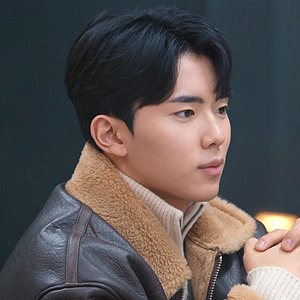






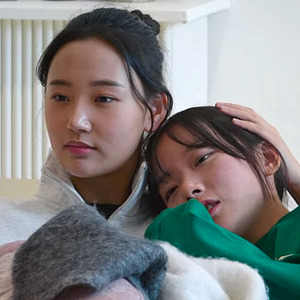
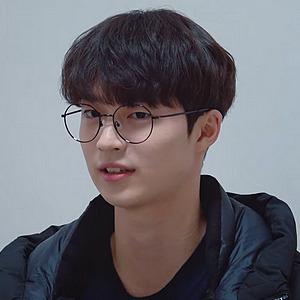
nineteen to twenty like or reblog if you use them
#nineteen to twenty#nineteen to twenty icons#netflix#reality show#twitter icons#reality shows icons#korean#icons#without psd#19/20
36 notes
·
View notes
Text


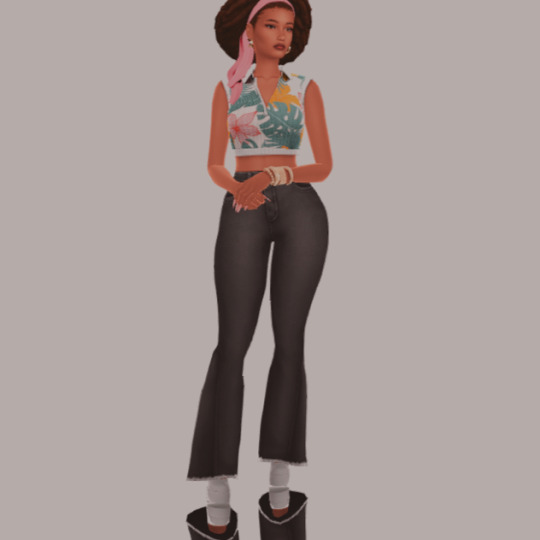

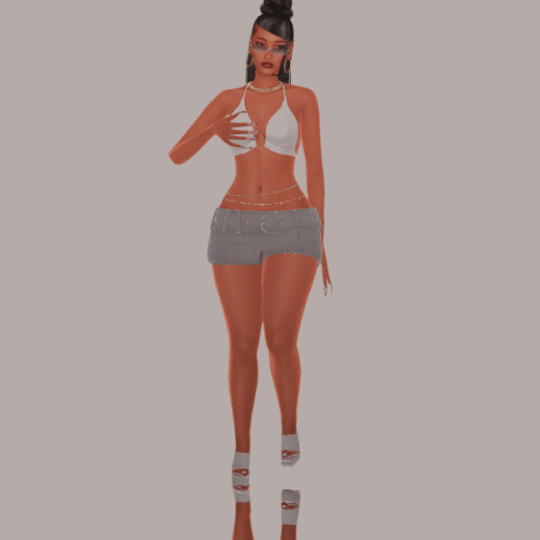
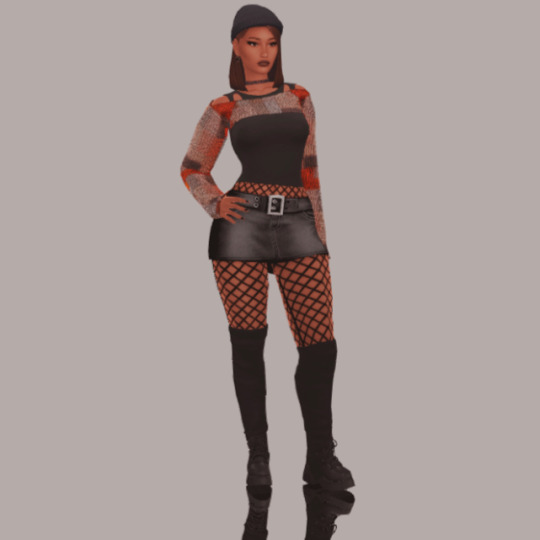
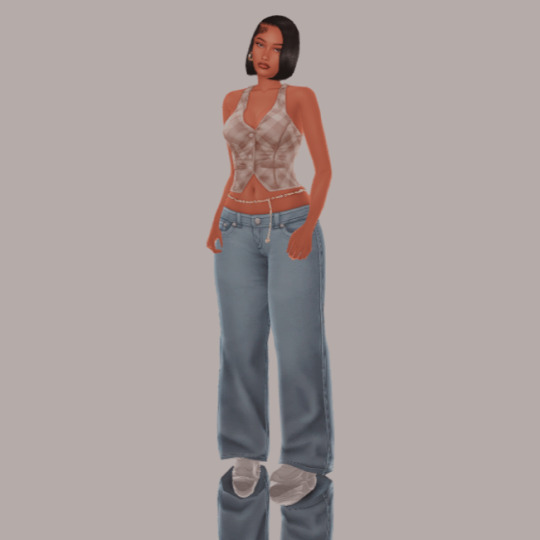

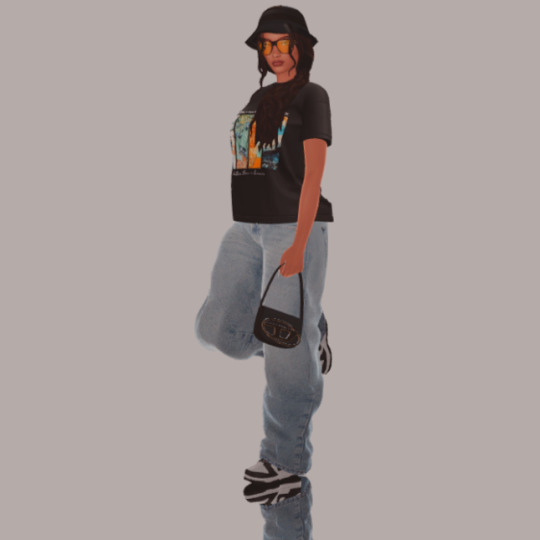
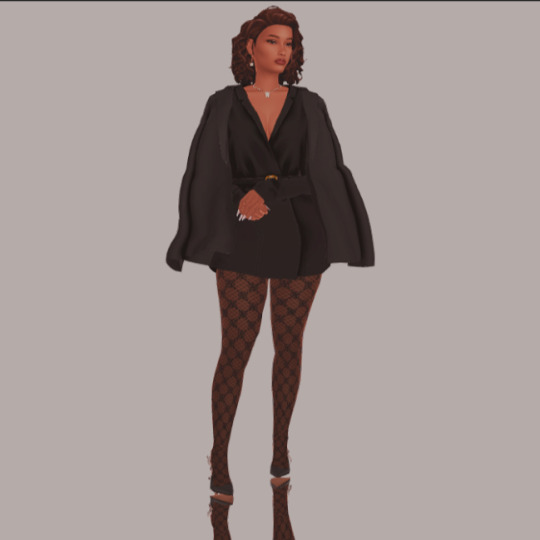
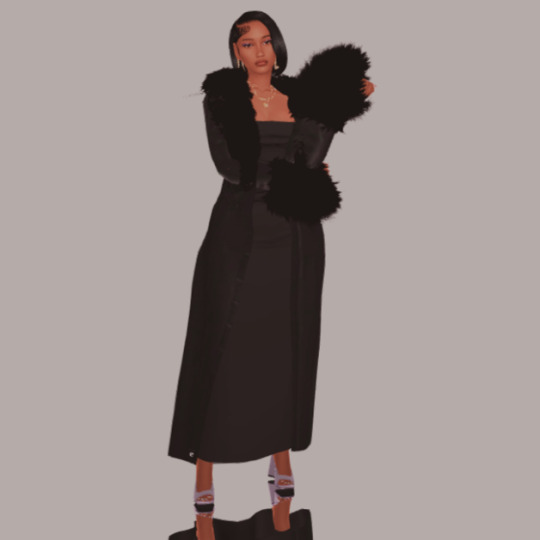


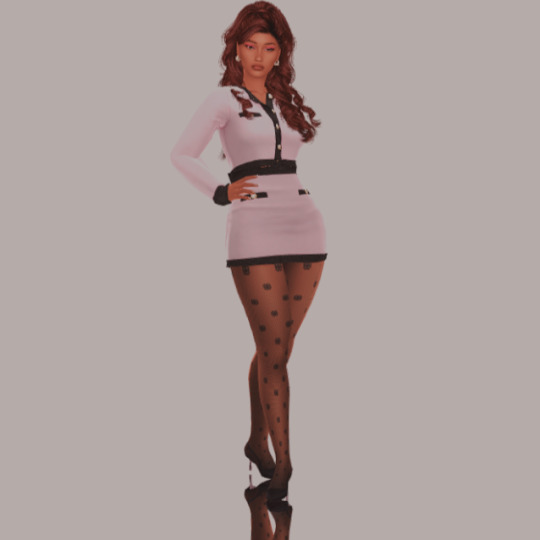
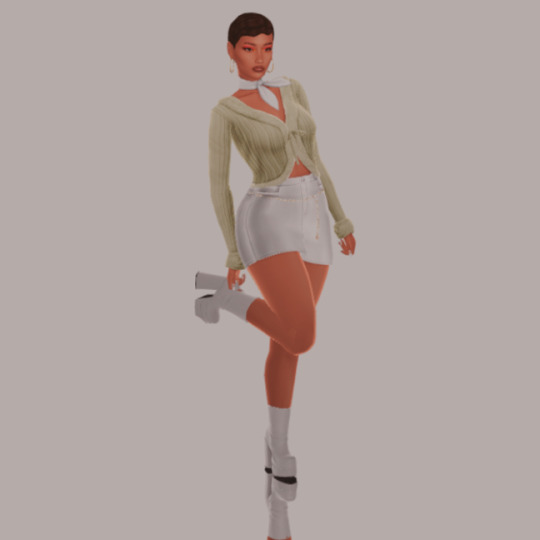

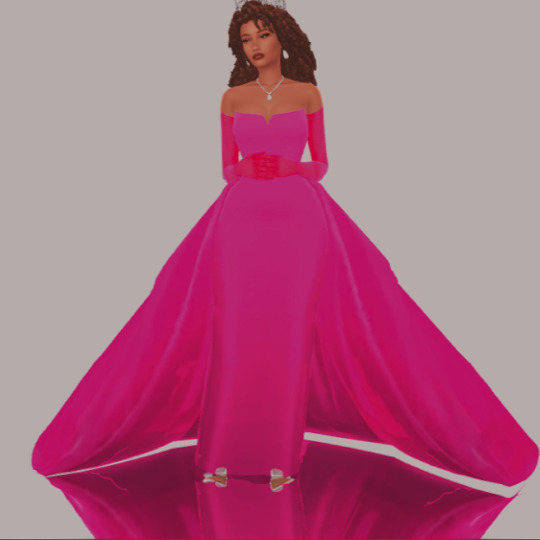

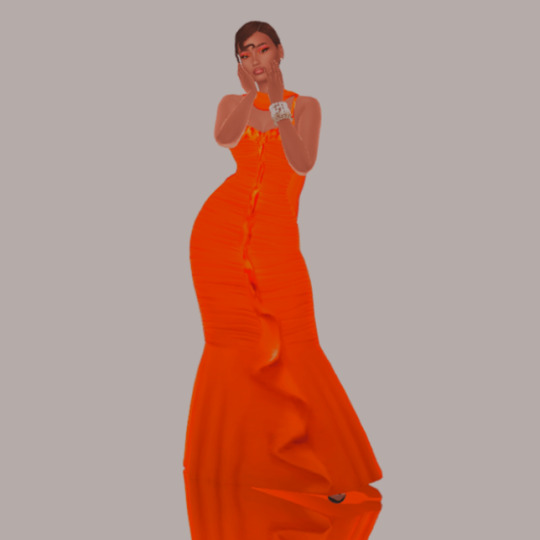
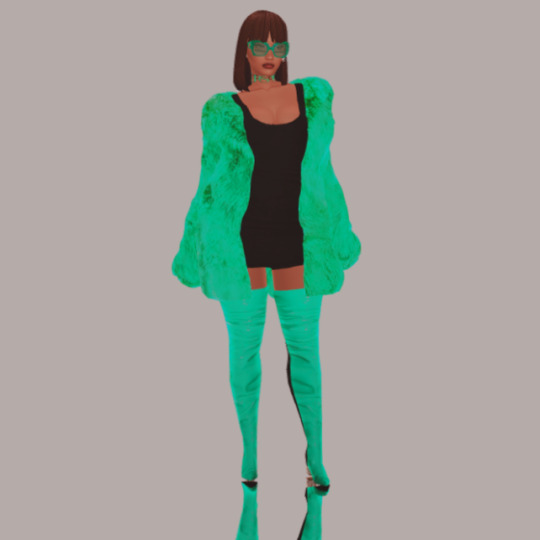
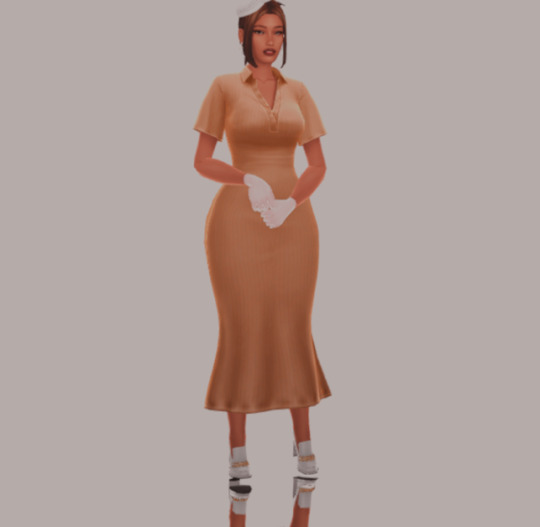
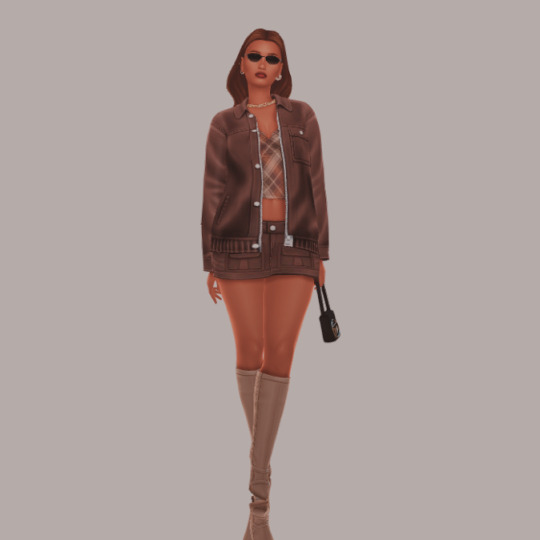

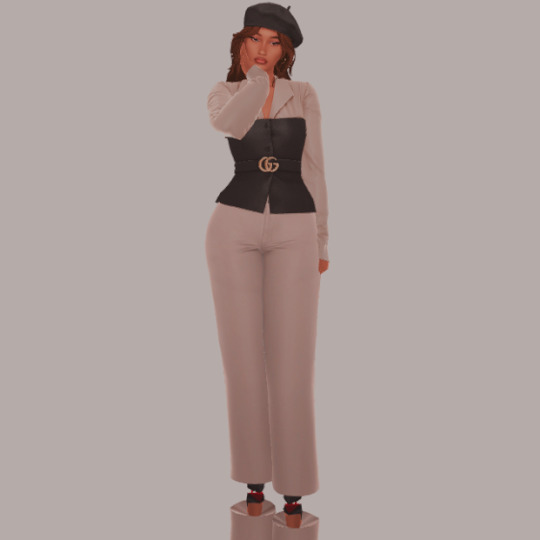


day one: neo soul/boho
day two: black panther
day three: 70s
day five: afro futuristic
day six: hoochie mama
day seven: grunge
day eight: 00s
day nine: dark academia
day ten: streetwear
day eleven: bougie
day twelve: vixen
day thirteen: alternative
day fourteen: anything (I picked haute couture)
day fifteen: black sitcom (miss Hilary Banks from Prince of Bel Air)
day sixteen: 90s (inspired by Nia Long)
day seventeen: coquette
day eighteen: royal
day nineteen: city girl
day twenty: old hollywood
day twenty-two: black icon (Rihanna at the iHeartRadio Awards 2015)
day twenty three: church
day twenty-four: model
day twenty-five: carnival
day twenty seven: old money
day twenty-eight: cottagecore
day twenty-nine: preppy
hello everyone, this is my very, very late BHM CAS challenge post. it took me all of a week and half to complete this with Sims nightmare - ish updates and my game constantly crashing leading me to redo most of the outfits, which was very much a big struggle.
I'd like to give credit to @tetesimsT and @sisisimss for starting this challenge, giving us the chance to shine during a month dedicated to black excellence.
thank you to creators such as @serenity-cc, @sentate, @dreamgirl, @jius-sims, @sheabuttyr, @arethabee, @aharris00britney, @simstrouble, @gorillax3-cc, @seoulsoul-sims, @greenllamas, @charonlee, @christopher067 and many more for their incredible work with their beautiful custom content.!
also would like to thank @helgatisha for the in cas poses, I love them!
love to send a shout out to my friends @simmervlogs, @victoriaplays, for all the love and support. I appreciate you guys so much.
#bhm cas challenge#bhmcas#black simblr#black simmer#black sims#black sims 4#cas challenge#sims 4#my sims#sims 4 screenshots#sims 4 cc#simblr#sims 4 aesthetic#the sims#ts4#sims4cas
30 notes
·
View notes
Text
Starting off Kinktober 2023 @vampirefest with a playlist! Sexy songs for sexy prompts of many types. No set ship so we vibe with every pairing. Whatever feels right, is right. ❤️🖤❤️
No more sunlight. The moon awaits us. ⚰️
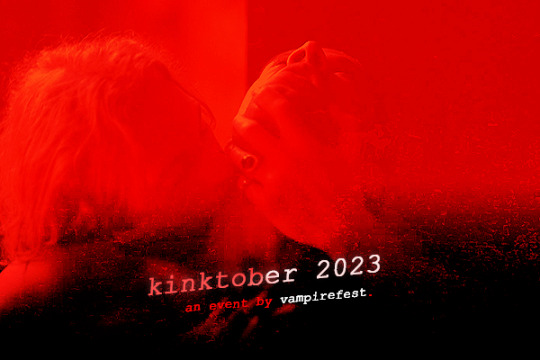
Now, on to your knees to click that link, my companion heart.
31 tracks for 31 days.
one: mack loren/if i didn’t know better
I take my time and study your face
Thinking of a different place for it to be while you keep
One hand on my waist, you grip my thigh
Heart starts to race
Like you could taste what I'm tryna hide
two: zolita/holy
I can fight but the devil wins
And I will fall like a saint who sins
Forgive me Father, I am weak
And it's not forgiveness that I seek
three: the marias/hush
Don't think you've made it under my skin
Could never get in
Forget about it
Don't talk so much
Your tongue is burning up
I've had enough
four: elley duhe/middle of the night
These burning flames, these crashing waves
Wash over me like a hurricane
I'll captivate, you're hypnotized
Feel powerful, but it's me again
Come, lay me down
'Cause I know this
'Cause I know this sound
five: saint mesa/lion
You burn everything you see
Gold are your fingers
Leaving traces everywhere you go
Diamonds in your skin
My blood flows
six: chloe adams/dirty thoughts
I'm frustrated
Do you really look good naked
And I know that it ain't that holy
But Lord I need this one night only
The more that I push 'em away
The more that you're stuck in my brain
The more I mentally undress
I confess
seven: king mala/she calls me daddy
She's a little bit psycho
But she follows
When I call in the middle of the night
She's got you wrapped around her finger
You try to linger
But she's already on her way to mine
eight: hey violet/unholy
Say your name while our tongues are tied
Getting shivers all down my spine
We're in bed, we're embedded in my mind
nine: hozier/eat your young
I'm starving, darling
Let me put my lips to something
Let me wrap my teeth around the world
Start carving, darling
I wanna smell the dinner cooking
I wanna feel the edges start to burn
ten: chandler leighton/when you say my name
Does it scare you
That I already know what you're into?
You can say less, I bet I can guess
That'll you say whatever to get me undressed
Double dare you, tell me two lies
Don't need no truths
'Cause I can see right through you
You're no good at pretend
I'm using your tricks that you use with your friends
eleven: dezi/sinner
Lead us not into temptation
Your touch is feeling like salvation
If you're down for misbehaving
If you're liking this sensation
Pin me on your wall like an icon
And I pray that you leave the lights on
twelve: banks/fuck with myself
You're in the corner waiting for my love
I put two walls behind you just to lean on
Kinda need 'em 'cause I stood you up
'Cause I fuck with myself more than anybody else
thirteen: dove cameron/breakfast
I'm sick, yeah, I'm sick
And honestly, I'm getting high off it
Do you wanna see a magic trick?
'Cause you don't know what you don't know
But I know
fourteen: lana del rey/freak
Flames so hot that they turn blue
Palms reflecting in your eyes, like an endless summer
That's the way I feel for you
If time stood still I'd take this moment
Make it last forever
fifteen: ari abdul/taste
I'm begging you, untie this noose
Want your hands 'round my neck
I'm begging you, come be my muse
You're all that I have left
sixteen: ag/terrible thing
Oh honey, you're so cold
I lose my self-control
seventeen: jesse joe stark/fire of love
Your kiss rips through the shadows
Lipstick poisons this black rose
Haunted and torn from the heavens
You pull the petals from my mouth
They fall and tenderly black out
Baby, it's been so lonely
eighteen: zaryah/deep dive
Deep dive into my lips
Heat of your breath takes me into your abyss
Hold tight, I'll fulfil every need
Head up, you got me down on my knees
nineteen: lana del rey/gods & monsters
In the land of Gods and Monsters
I was an angel looking to get fucked hard
twenty: darren hayes/insatiable
Breathe in breathe out, there is no sound
We move together up and down
We levitate our bodies soar
Our feet don't even touch the floor
twenty-one: melanie martinez/high school sweethearts
If you can't handle a heart like mine
Don't waste your time with me
If you're not down to bleed, no, oh
If you can't handle the choking, the biting
The loving, the smothering
'Til you can't handle it no more, no more
Go home
twenty-two: ramsey/daddy
Baby, you're divine, I leave my body
Suckin' on your tongue, gold teeth, come find love
twenty-three: massive attack/paradise circus
Love is like a sin, my love
For the ones that feel it the most
Look at her with her eyes like a flame
She will love you like a fly will never love you again
twenty-four: aeseaes/desire
I'm an old
Desire
Sleeping in your skin
I'll take you over
And let you hide
And let you hide
twenty-five: natalia kills/problem
Sweat, dripping down your chest
Thinking 'bout your tattooed knuckles
On my thigh boy boy boy
Cold shower... you got no power to control
How I make you my toy toy toy
My hips rocking
As we keep lip locking
Got the neighbors screaming
Even louder louder
twenty-six: the pretty reckless/going to hell
Gettin' heavy with the devil, you can hear the wedding bells
twenty-seven: meg myers/desire
Baby, I wanna fuck you
I wanna feel you in my bones
Boy, I'm gonna love you
I'm gonna tear into your soul
twenty-eight: soap&skin/me and the devil
And I said hello Satan, ah
I believe it is time to go
Me and the devil walkin' side by side
twenty-nine: chymes/gity
You can trust in me, no, you don't have to hide
Have anything you want, just tell me what you like
Bring out the devil in you, it can't hide
I feel the fire trapped inside
thirty: banks/gimme
At the rock bottom baby crawl, crawl
I let you lick it from the ground, ground
'Cause I've been drippin' for your love, love
You can call me that bitch
thirty-one: nine inch nails/closer
I wanna fuck you like an animal
I wanna feel you from the inside
I wanna fuck you like an animal
My whole existence is flawed
You get me closer to God
You just have to nod your beautiful head and say yes 🩸🩸🩸

#vfkinktober23#vfkinktober2023#vfkinktober#interview with the vampire#the vampire chronicles#lestat de lioncourt#louis de pointe du lac#the vampire Armand#daniel molloy#Loustat#loumand#Devil’s minion#lesmand#iwtv#amc iwtv
41 notes
·
View notes
Text
Lost & Found - Chapter Twenty Two.
Well, guys, here it is. Sorry it's a few days late, but as you all know I have so much going in my life at the moment, but I made an effort to get this to you timely, the final chapter of our story. Thank you all for your continued readership, you honestly mean the world to me :)
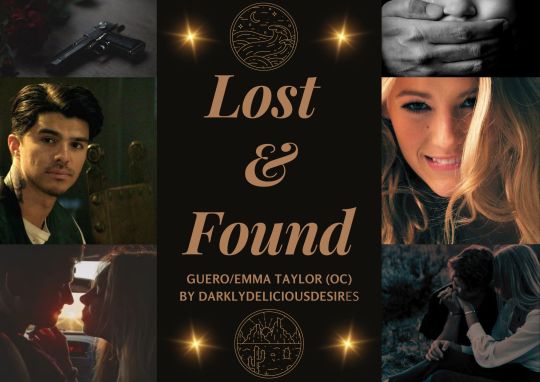
Previous chapters - One Two Three Four Five Six Seven Eight Nine Ten Eleven Twelve Thirteen Fourteen Fifteen Sixteen Seventeen Eighteen Nineteen Twenty Twenty One
Words - 3,533
Warnings - 18+ content throughout, Minors DNI. Recounts of kidnap, child trafficking, physical/verbal/sexual abuse.
“My stomach is hungry, but I’m not.” Turning to look at him, she pulled a half-scrunched face. “Is that weird?”
“Can’t relate. Whenever my belly is demanding I feed it, I gotta do it. You know how hangry I get.”
He made quite the valid point. Guero was like a bear emerging from hibernation when in need of food; very much motivated towards eating, and somewhat aggressive if couldn’t get his hands on what he required. “Mother fucking Mary, I do!”
Her giggle brought a little light to her face that had been all but extinguished in the time they’d lain on the bed, Emma battling with her emotions surrounding the fact that Rocco was no more. Just then, her phone beeped, Guero passing it to her as she sat up, pressing the message icon, her heart skipping a beat.
‘Will call you soon, darling. So relieved you’re alright. It’s all over now. Love you all the world. Mom xxx’
Her bottom lip wobbled, her throat pinching tight. “Oh my god.” She got that Marie was perhaps a little too distracted at present, having to play the part of the frantic wife whose husband was missing, explaining it to the kids and her family, so calling might have been difficult. A text was enough, though. It also showed Vincent’s intentions clearly. He was living up to his promises.
“As far as mafia bosses go, he seems pretty fair,” Guero remarked, after she’d shared those thoughts with him. “I know he’s only been at the helm for like, a couple hours, but yeah. At least we don’t have to be doing nothing for him we don’t wanna be.” He paused to let her speak, but her words were halted when his stomach let out a very audible growl.
“Somebody needs feeding,” she commented, arching an eyebrow as they both shared soft laughter.
“Yeah, I guess I do.”
Shifting herself up, she kissed his chest, reaching to stroke his face. “I’ll go put that pizza in the oven. Just because I don’t feel like eating, doesn’t mean you shouldn’t. I can always nibble at a slice, if you don’t inhale the entire thing in three minutes.”
Getting up, he followed her through to the kitchen. “How well my woman knows me.”
While Emma went about jazzing up the frozen pizza with a little extra in the way of meat, cheese and olives, Guero stood and observed, handing her a tequila shot she sank in one.
“Keep ‘em coming, baby.”
He grinned. “As I will with you as soon as I’ve filled my stomach. If you want me to, that is?” He was mindful that perhaps sexual gymnastics might not be too high on her list of priorities.
Leaning to kiss him, she gave his cheek a playful nibble. “it’ll be the perfect thing to take my mind off of it all.”
It proved to be perfect for just that, Emma falling asleep soon after she’d been thoroughly ploughed into the mattress. In the coming days, though, it all whirled around her head like a small tornado, trying to find her balance and return to normal, yet one thing hung over her like a fog. She hadn’t heard back from Marie.
Two days passed, Emma feeling confused and hurt, throwing herself into her work to deal with what she assumed to be some kind of rejection, venting all to Lee.
“I wouldn’t worry, sunshine,” her friend began, handing her a can of lubricant to assist in loosening a rusted exhaust clamp. “She’s probably got a lot on, liaising with the police, reporting Rocco as a missing person, all the while dealing with the fact that he actually fuckin’ ain’t missing at all. I bet she’s had a lotta emotions to process, just like you have.”
Lee’s words made a lot of sense, Emma realising that perhaps it was a little selfish given the circumstances, for her to expect Marie’s immediate attention when she too had so much to process in the aftermath. “I think you’re right, yeah. I’ll give her time on it.”
Time. It was only natural that Marie needed some, she assumed, kicking herself a little for thinking selfishly. Of course, she had much to deal with and just because she wasn’t at the epicentre of it didn’t mean she cared any less. “You’re thirty, a grown woman. You can deal with your mom not calling you right away.” she thought to herself while returning to her work.
Come the following afternoon, though, Emma discovered that time moved a lot quicker than she’d envisioned it would, seeing a large, white vehicle driving slowly through the yard, coming to a stop in the space between the clubhouse and the workshop. When the door opened, she could barely believe her eyes. There, looking way too glamorous for her surroundings, stood the one person her heart had ached for since her escape.
She should have known the woman who folded her loving wings around her for nineteen years would never abandon her, now she could safely find a way back to her again.
“Mom?” She could scarcely believe it, but there she was. There was the woman who had loved her and tried so valiantly to keep her safe all those years. Pulling off her gloves, she shot out from the workshop, running with tears pooling her eyes towards the loving, open arms that awaited her. “Mom!” Reaching out, she flung her arms around her, Marie clasping her tight, breathing in her scent, sobbing hard into her hair with relief.
Even the most hardened of men who had exited the clubhouse to witness the scene felt their throats pinch, watching the women reconnect, the bond they had incredible. It was borne of love and loyalty, victims of similar circumstance and because of such, perhaps even stronger than that of DNA and blood.
“Emsy, oh my god. Oh, I missed you so, so much!” Marie cried, stroking her hair, holding her in a tight embrace.
“What are you doing here? I thought you were gonna call! Are the kids with you?” she gasped, Marie rocking her in her arms, pulling back a little to look at her.
“No, I couldn’t take them out of school, so they’re with friends. And I was gonna call, but it didn’t seem enough. Besides, had to show my face in the interests of looking concerned about my husband going missing out here. Nobody needs to know it was my daughter who I really came to see.”
Emma’s bottom lip quivered, Marie smoothing her hair and clutching her close again, soothing her as she began to sob. “Love you all the world, my darling. It’s over now, baby girl. All over. Shhh, it’s alright.”
“I feel... I... so much guilt, and I don’t feel like I should be relieved... and I,” she gasped, her chest heaving with the force of her sobs, Marie soothing her. “Mom, I can’t... I don’t... I...”
“Shhhh, my darling. You’re losing it a little, deep breaths, come on.” She began to breathe in deeply, holding Emma’s eye contact, watching as she mirrored her and began to calm. It was an exercise she’d done with her since she was ten, to calm her panic attacks as a result of what Rocco routinely inflicted on her. “You wanna go someplace to talk, just you and me?”
“Um, yeah. I gotta check with Lee first. And, well, there’s somebody I want you to meet.” Turning to the clubhouse, she smiled, beckoning with her hand. Guero walked over, returning the wide smile Marie greeted him with. God, Rocco had really been punching. She was in her early fifties, but still an absolute knockout. “Mom, this is my boyfriend, Guero.”
“Oh, what a nice name,” Marie began, opening her arms. “I’m a hugger, you gotta bring it in, mister!”
He laughed softly, obliging. “Good to meet you at last, Marie. She’s missed the hell outta you, you know.”
“Very mutual! But mother Mary, I was so relieved she was safe. So, you been looking after her, huh?”
“Yeah,” he nodded, wrapping an arm around Emma. “Always will, too.”
Her smile was fond, reaching an elegantly manicured hand to stroke his cheek. “Mind if I steal her a while? I think we need to reconnect.”
He shrugged, shaking his head. “No problem.” Emma kissed him, going over to Lee to both clear it with her, and introduce her mother and best friend, Lee a little stiff at being hugged, but polite all the same.
They headed off in the rented white SUV, Marie turning the air con back up to full, bemoaning the heat.
“Mom, this is nothing. You should try a summer here, holy Christ, it’s like hellfire!”
Marie smiled, turning the car around to drive back out. “Remember that summer when you were thirteen, and Rocco had gone away to Atlantic City for a long weekend? You turned into a prune from the amount you were in the pool.”
The memory warmed her, much like the sun had upon that beautiful July day, Emma remembering the taste of freedom as she gave Marie directions. “Left here. And yeah, yeah I remember it. You always tried so hard to give me little pieces of normalcy, in a situation that was anything but.”
“Wish I could have done more, darling.” The sad smile widened when Emma reached to squeeze her arm, Marie’s hand covering it in a soft clasp, continuing through the streets until they reached the coffee shop. Parking the rental car up, they walked down to the location, Marie going in while Emma took a table outside.
When she returned, she sat in silence for a few moments, tears filling her eyes as she reached to stroke her face in her hands. “Jesus and all the saints, look at you, my girl,” she gasped softly, marvelling at how well her daughter looked. “All tanned and happy, and these tattoos! My god! Are you going to have your entire arms covered, or just to the elbows?”
She shrugged softly, turning her arm so Marie could examine the underside. “I’m not sure yet. I was considering getting something across my upper back, because I’ve been bitten by the tattoo bug well and truly. I know you always hated them, so I expect to get an earful of protesting.”
Her eyes were kind, shaking her head softly. “Nope, Emsy. It’s your body, you do to it as you please. Just because it isn’t my thing, it doesn’t mean it can’t be yours, baby. Besides, they really suit you. Tell me about them, what’s this tree lady looking one here all about?”
“She’s a dryad.” Emma began, before explaining to her all about the mythology behind it, Marie listening with interest. All the way through, she marvelled to herself at just how alight Emma looked, how she was seeing so much of her character sparked into life, the person she only ever revealed when it was the two of them alone.
As for Emma, she was revealing the details of her job when suddenly, her voice quivered and she paused. “I’m sorry, I just... I can’t believe we’re back together. I thought I’d never see you again, and you’re right here. I love you, mom.”
Marie fanned her face, taking a deep breath as her eyes swam with tears. “Love you too, Emsy. I can’t believe it either, darling girl. Look at us. We’re free.”
“What’s your plan, going forward?” she asked, composing herself, taking a big sip of her coffee.
Marie widened her eyes a little, pushing the crumbs from the brownie she’d eaten into a small pile upon the plate before her. “Play the part of the heartbroken widow after they find his remains, head back to New York, and put that damned prison he kept us in straight on the market. Too many memories, none of which I want to keep. It’s time to start afresh for us all, isn’t it?”
Indeed, it was. In the months that followed, the plan devised by Vincent and the club ran its course with perfection, nobody any the wiser that Rocco Lombardi hadn’t been mauled by a bear after the scant pieces of his remains were recovered within the forest. With him gone, Emma was able to exist as a person, Marie was able to move on with her life, a life that included leaving New York behind for a fresh start.
There was also one little part, or rather now not so little, that Emma could finally reconnect with, too.
Driving up the tree lined street, Emma’s memory of the place bloomed into full colour, the memories from her childhood all coming back to her. She recognised the houses, some different, some exactly the same, her face breaking into full joy at seeing the huge guy who looked like a quarterback standing outside of the one that definitely hadn’t changed much.
He looked just like their dad had at twenty-seven.
Guero had literally only just braked when she flung the door open, jumping from the car and running up the bank of grass outside her grandparents' home, Dylan covering the ground just as quickly, his arms wide. It was an embrace twenty years in the coming, the siblings overjoyed to see one another again after so long, the emotions flooding out as they held one another, laughing and crying.
“Oh my god, oh my god, look at you!” she cried, holding his face in her hands, stroking his tears with her thumbs. “You look just like dad.”
He nodded, pulling her close again. “And you look just like mom.” Their hug was near unbreakable, Guero standing back and letting them reunite, leaning against the rental car with a smile. “Gran’s just getting her shoes on.” he then added, turning to see his tiny grandmother ambling as fast as she could, Emma sobbing as Bea held her arms wide.
“Oh, sweetie pie!” she gasped, Emma falling into her soft hug with a sob. “I never thought I’d live to see the day! Welcome home, welcome home. Heavens, we missed you so much!”
Dylan moved to assist their grandpa, Wilf waving his hand as he struck his walking cane into the ground. “Ahh, with your fussing, boy! I’m fine!” Reaching Emma, he suddenly stood straighter than his sore back had allowed him to in years, holding his arm out. “Give me some cuddles, babe. God, I missed ya!”
Snuggling against her grandpa’s shoulder, she wept all over again, his lips pressing a kiss on her forehead. “We got her back, at last we got our gal home. I just wish your mom and pop could be here to see it, too.”
All four of them stood in a loving huddle for what felt like a very long time, Emma finally calling Guero over to introduce him, where he was embraced just as warmly. They went inside, her grandpa immediately picking up his phone.
“Family photo time! Now, where in the heck did I put my selfie stick?” He began to rummage, her grandmother rolling her eyes. “Bea! Where’d ya put it?”
“He’s found Instagram and decided it’s his thing,” she explained, moving to reach behind the couch cushions and retrieve the errant selfie stick. “And he even does those tic-tac videos!”
“That’s Tik Tok, gran,” Dylan softly corrected, giving Emma a nudge with his elbow.
“Bah! I don’t know all this new aged, newfangled internet stuff! Disney Plus is about as up to date as I like to get. Now, everybody get in, come on, Guero, you too!”
Five smiling faces were captured, a moment in time none of them would forget, a family reunited and joined by the person who had found the little lost bird, eventually returning her to the flock from where she’d came so many years before.
The flock that now surrounded Emma was made up of three different groups, all of them her family, one born into, one taken into, and one found. Merging them was something she looked forward to, but with a little apprehension when introducing her family to the woman she called mom.
Marie’s move from east to west coast had not been an easy decision to make, but with her only sister already out there and her parents sadly both passed, she had very little to remain on Staten Island for. She was also long done with the stigma of being a now deceased mafia bosses’ wife following her around. It was time for a change.
It meant her children leaving the only place they’d called home and their friends behind, but her eldest was quick to remind her just how fast children adjust. Getting to run into the arms of the girl they’d thought to be their nanny, who Marie now said they should think of as their big sister definitely helped their relocation, though, when Emma met them at the airport upon their arrival.
It would be a further three months before Emma’s flock all came together, Marie wanting to throw a housewarming dinner, inviting everyone she was close to from the club, as well as her grandparents and Dylan, plus his new girlfriend. Having explained everything that had happened to her, her family were not in the dark over the bond she and Marie had formed, yet nerves still riddled her as she paced the lounge area of the spacious Orange County abode, Guero right behind her, rubbing tension from her shoulders.
“Why you bugging?”
She halted, turning to rub her hands over his smooth arms. “I don’t know, I really don’t! I mean, gran and grandpa were fine about it all, Dylan too when I explained it all to them. I guess I’m just nervous about calling her mom in front of them, don’t wanna upset them or make them think I’ve forgotten Cassie mom when I never will.”
It had been an emotional moment, back when Dylan had driven them out to the cemetery in Spokane so Emma could visit their parent’s final resting place, the siblings cuddling one another tightly as the elder had cried for all she’d lost.
Guero was just about to reassure her that he didn’t think that would be the case at all when a call came from the front door, Emma seeing Marie moving to greet her guests in the form of her grandparents themselves. Walking over to do the same, she was presented with a truly heartwarming sight.
“Beatrice, Wilfred, welcome to my home. I’m so delighted to have you both here,” Marie spoke cordially, offering her hand. Immediately, Bea shook her head. A nervous lump rose in Emma’s throat, for all of two seconds.
“No, sweetie pie. We’re family, and family hug.” She watched Marie sink happily into the offered embrace looking like she was breathing a sigh of relief, her gran continuing. “Thank you for looking after our precious gal, doing what you could for her, being a mother to her. I’m so sorry for everything you went through because of that man, but I am so grateful to you for trying to make it better for Emma while she was there.”
“Of course, of course,” Marie tremored, a million memories flashing through her mind’s eye. Secret cuddles, secret gifts, secret cake, secret love. She no longer had to hide any of it.
Wilf beamed, opening his arms to her next. “You’re a good gal, Marie. I echo everything the wife just said, and this place you got here, holy moly! Is than one of those infinity pools you got out back there?”
“It is,” she confirmed, kissing his cheek and moving to welcome Dylan and Evie, his girlfriend.
“Well dang it, I should have brought my trunks, shown off this body of mine to all you ladies!” His joke had everyone in soft fits, Wilf flexing his non-existent biceps with a grin. “What are you laughing at, boy? I look better than you!” he then directed at Guero, who was as usual totally taken by the hilarity of his girlfriend’s grandfather.
“That’s why I’m glad you didn’t bring the trunks, man. I can deal with that kind of competition.” His statement only provoked further laughter, Marie ushering them into the house to offer further introductions. Emma stood back with Guero to watch it all, this band of people all so different, from so many walks all life, all brought together because of her. Family. Her family. There they were.
“What you thinking about?” Guero asked, wrapping his arms around her waist from behind, resting his cheek against hers as she leaned back into him.
“Just how I’ve gotten everything I ever wanted at last. It doesn’t look like I thought it would, but that’s one hell of an amazing family I have right there in all those people.”
He kissed her cheek with a smile. “You got a really amazing immediate one right here, too. You, me, and this little one.” As he stroked the small, rounded swell of her pregnant belly, she couldn’t agree more. Six months later, their first child joined them, a daughter.
They named her Cassie Marie.
The End.
#guero mayans mc#guero mayans mc fanfiction#guero fanfiction#mayans mc fanfiction#guero x ofc#mayans mc fanfic#mayans mc fic#mayans season 5
24 notes
·
View notes
Text
The Pride of the Navy
Chapter 4: The Grand Canyon
Summary: Test simulations and tested friendships headline the show
Warnings: Cursing, insults

Another obscenely long shower was on Quinlan’s to-do list. Partially due to Quin waking up unbearably early even before her alarm, and partially that even after sleeping for eight solid hours, Quin still felt as tired as she did leaving base the previous day. The hot water flicked down her back as her shoulders screamed at her for the two hundred pushups she was forced to do. After what felt like an hour, she got out and went on with her morning routine, finally grabbing her silver aviators before leaving her front door, jumping into her impala.
Quinlan was in her car, no music playing for the fact it required too much energy to even listen to. After the end of training yesterday, she and Phoenix walked together toward their cars in silence, each other being there just to know that whatever the fresh hell they just went through, they weren’t alone. That’s when they both overheard none other than Hangman, with an accompanying Coyote, near the Top Gun graduates' photos, point out a familiar name. Except it wasn’t under the grad class of twenty-ten but under the class of nineteen-eighty-six.
“Bradshaw. As I live and breathe.” The signature ‘Jake “Hangman” Seresin’ smirk plastered on his face. Quinlan knew exactly who he was pointing at, all blood feeling like it drained from her limbs. Although Quin elected to ignore what she had heard she hoped, silently praying, Hangman would be a gentleman for once in his life and ignore the history he stared at. But hope could only go so far, and she knew whatever Hangman had just learned wasn’t going to end well.
Quinlan walked into base, parked closer to hangar 7 than the previous day, and accidentally right next to the iconic antique Bronco of Bradley Bradshaw. Coincidentally, totally. Seeing about half of the aviators seated, Quin took the same spot she was in before, but only Bob behind her so far.
“How’d you sleep, Bobby boy?” Quin tried not to portray her tiredness so obviously through her tone of voice, but damn, it was hard. Bob just tilted his head at the new nickname.
“Like I was dead. But apparently not dead enough to feel rested.” Quin agreed with every word. That was the deepest she’d slept since probably she was born, but dear god did she need more sleep. Phoenix sauntered into the hangar, looking convincingly rested, even suspiciously so. She glanced at Rooster, whose head was resting against his desk, arms limp at his sides since before Quin had walked in and sat down. Quin had an amused look while staring at the obviously sleep-deprived man, matching Phoenix, and Bob. Only difference? Quin spoke before she could stop herself.
“D’ya sleep well, sport?” At such a depressing-looking sight, Quinlan couldn’t help herself as she spoke, voice overflowing with sarcasm. What did she get in return? A shocked look from Bob, an amused headshake from Phoenix, and an earth-shattering glare from Rooster, which confirmed the thought that if he wasn’t so tired, Quin would most certainly be dead.
Maverick had walked through the doors and Rooster wanted to either punch someone, cry, or leave. Given none of those was an option without mostly severe consequences, he sat up, tried to look like he didn’t want to commit murder of the third degree, and stared at the screen ahead. Maverick assessed the group, looking almost just as sleep-deprived as them. The screen lit up, with bright digital lights saying, ‘TIME ON TARGET -3:00:00’.
“Time…” Maverick nodded his head towards the screen, “is your greatest enemy.” Quin shared a quiet sigh with Phoenix, and the lesson was off.
“Phase one of the mission will be a low-level ingress attacking in two plane teams.” Maverick pointed to the new map layout on the screen, a canyon colored by green lines, a warped grid showing the depth. “You’ll fly along this narrow canyon to your target.” A quiet ‘what the fuck’ left Quin’s mouth, Rooster barely nodding in response.
“Radar-guided surface-to-air missiles defend the area. These SAMs… they’re lethal. But they were designed to protect the skies above, not the canyon below.” Maverick saw the nerves on every pilot in front of him, knowing he’d be in the same position if he was the student instead of the teacher.
“That’s because the enemy knows no one is insane- “An interjection from none other than Quin, “Or stupid.” “Enough to try and fly below them.” Maverick gave the two a look, what that look meant, Rooster nor Quinlan could decipher.
“That’s exactly what I’m gonna train you to do.” Looking more widely at that class, versus the two pilots in the front row, Maverick continued with mission details.
“On the day, your altitude will be one hundred feet, maximum.” Yep, it was confirmed, this was gonna be a suicide mission.
“You exceed this altitude, radar will spot you, and you’re dead.” The nonchalant tone in his voice truly unsettled every flier’s thoughts. Someone wasn’t coming back.
“Your air speed will be six hundred sixty knots. Maximum. Time to target, two and a half minutes. That’s because fifth-generation fighters wait at an air base nearby. In a head-to-head with these planes in your F-18s… Again, you’re dead. That’s why you need to get in, hit your target, and be gone before these planes even have a chance of catching you.” Good Lord, Jesus Christ above, or whoever the fuck resided in the heavens, needed to bless this mission personally at this point. But Maverick wasn’t done talking.
“This makes time your greatest adversary. You’ll fly a route in your NAV system that simulates the canyon. The faster you navigate this canyon, the harder it will be to stay under the radar of these enemy SAMs.” Not a single one of them was ready for this. Not even the flying legend, Pete ‘Maverick’ Mitchell, himself.
“The tighter the turns, the more intensely the force of gravity on your body multiplies. Compressing your lungs, forcing the blood from your brain, impairing your judgment, and reaction time.” That much they all knew, but what they didn’t, is just how many times this mission would induce that bone-crushing weight.
“For this training; max ceiling three hundred feet. Time to target, three minutes. Good luck.” And boy, oh, boy, did they need it. Gathering themselves on the way to the locker rooms, the chosen twelve could only hope to grasp the importance of this mission. Quinlan followed the majority, her, and Bob lagging towards the back of the group. Some of the pilots looked as ready as ever, insert Hangman here, and some looked ready to shit themselves, example, Fritz. Phoenix and Quin separated from the mass amounts of testosterone, going to the female locker room.
“Cas…” Neither Phoenix nor Quin were people who easily showed emotion, but with one word Quin knew they had the same thought. Neither of them was ready for what was to come. Training was one thing, but the ever-looming mission date was another.
“Cas. Do you honestly think half of us can do this? We are all cocky motherfuckers but saying and actually doing are two very, very different things.” Not many saw it, but Natasha Trace worried about anything and everything. After all, it wasn’t just her in her plane she had to worry about. Another human being, in this case Robert Floyd, trusted her with their life. Trusting her to bring them back to their family, safe and all in one piece. And that is why Quinlan opted to fly solo. Making sure she didn’t die was enough, looking after a second life? No, thank you.
“Nix, you are one of the best pilots I know, and so are most of these other guys. If anyone can fly this mission successfully, it's one of us.” In her head, Quin had already been analyzing everyone’s flight habits, seeing who would, and subsequently wouldn’t, make the cut. But flying a new course with new parameters? Every previous thought went into the trash.
“Come on, Nix. We gotta get back to the hangar.” On the outside, Quinlan was calm and collected, but inside? She felt like a cat-five hurricane ready to decimate the coast. Swirling in circles of intense emotion, the deep corner of her mind that housed her unseen feelings taking a beating like rough waves on the rocks, the bottle of containment slowly crumbling. And those were the last words Quin spoke before Phoenix was up in the air with Coyote. All the aviators were gathered in the small green room, gathered around the radio. Some sat on stools, some leaning on the bar-like counter, but all intently listening to the plane comms.
“Time to target is one minute thirty, we are two seconds behind, increase to four eighty knots.” Bob’s voice, always sounding somehow mathematical, sounded, the for the first time since pre-flight check.
“We gotta move, Coyote!” Phoenix urged, earning confirmation from the single pilot, only to be followed by Phoenix’s curse. Quinlan looked around the room at the other aviators, masking her worry to analyze the others. Rooster, standing as far away from her as he possibly could, clenched his jaw as his eyebrows furrowed. Hangman looked as disinterested as possible, a few of the others showing small indications of worry just like Rooster. Next up, was Payback and Fanboy, ever so unluckily accompanied by Hangman. All huddled once more around the radio, Quin and Bob shared a concerned look, because who could possibly fathom what shit the resident cocky pilot Lieutenant Seresin was going to pull.
“Hangman, ease up! The canyon is getting tighter-“Payback, a talented pilot but nonetheless flying with Hangman, spoke worriedly with the strain evident in his voice.
“Negative, Payback. Increase your speed.” The smirk could almost be seen through the comms. Quin just knew his pearl-white teeth were glinting in the sun’s glare, at the expense of his fellow pilot.
“Of fucking course.” A disappointed but expectant sigh left Quin’s mouth after she heard Bob speak, many of the other fliers nodded in agreement, or gave small words of similar thought. Rooster just clenched his fist, the anger seeping into his hazel eyes. If asked, Quinlan would contest the fact she studied his every move, but old habits die hard. After another few seconds of Payback and Fanboy yelling at the resident asshole to slow down, they slammed into the imaginary canyon wall, signifying the end of their run. Up next? Quinlan, Omaha, and Fritz. Well, here they went.
“Cas, good luck.” Bob gave a curt nod, his hand squeezing her shoulder. Phoenix nodded, even Rooster sparing her a quick glance. That was new… But alas, off she went, her plane engine revving to life with the force equivalent to Zeus’ tantrums.
“Y’all boys ready?” Quin was confident in her flying abilities, but this course was probably nothing any Navy fighter pilot had flown. She was just lucky if she made it to target. To her? Didn’t matter how long it took. Quinlan squeezed the mismatched dog tags in her pocket, those being her good luck charm. And so, they reached the start of the course.
“Your time starts now.” Maverick’s voice spoke in their ears, confirming the time was ticking. Each corner she turned, the weight on her lungs increased, and the blood in her head did the opposite.
“Cas! We are ten seconds behind schedule, we are running out of time! Increase speed to five hundred knots!” Omaha spoke with a tone of concern, but time didn’t matter right now. At least, not to Quin.
“Negative increase, Omaha! We can make up time elsewhere, canyon’s getting tighter!” Her tone was firm, no room for re-negotiation. Once Quin’s mind was made, it was hard to change. With less and less space, it felt like the wings on her plane were scratching the imaginary walls of the canyon. Surprisingly, it was possible to feel claustrophobic on an imaginary track and Quinlan felt it.
“Casper, you’re slowing down! Oh, fuck!” Fritz’s voice rang in Quin’s ears. They had gone above the max ceiling.
“God damnit!” The curse slipped quickly from Quin’s lips, her quiet demeanor crumbling in seconds. By the time Quin made it back to the green room, Rooster was up in the air. Quin was beyond frustrated, purely with herself. She was the reason her wingman was dead. She unconsciously slowed down. Hypothetically, Fritz and Omaha were dead. Her fault. A hand rested on her shoulder, the figure behind her.
“You did good Cas, made it the farthest out of all of us.” Bob’s words of reassurance did absolutely nothing for her frustration but were apricated anyways. Bob received a small nod, one of acknowledgement but nothing more, and he returned to his spot next to Phoenix. Rooster was getting told to increase his speed, just like Quin was told, except, he was double the time Quinlan was behind by. In the corner, Hangman huffed a short laugh,
“Looks like we got two slow pokes on our team.” A few of the other cocky pilots chuckled with Hangman, imitating the way he said two like fucked up parrots.
“Zip it, flyboy. Hope your wingmen enjoy being dead for the sake of your ignorance.” Quin sneered, her voice like poison. Quin was normally quiet, saying a few sarcastic phrases here and there, mainly her bell necklace being her voice, giving away her head shakes and movements, but not today. Today she was pissed, at herself mainly, and was in absolutely no mood to take Hangman’s shit.
“Ooo, did I hit a nerve, kitten?” The smirk still rested on his face, well that was until Quinlan lunged. Thankfully, for Hangman’s sake at least, both Phoenix and Bob restrained her shoulders, and Hangman’s now deemed bodyguard, Coyote, stood in front of the pilot.
“The kitty has claws…” The smirk gone, but a small smile in its place still irked Quinlan to no end, but Phoenix spoke before she could.
“Another word, and I stop holding her back.” By now everyone had stopped paying attention to the radio, not realizing Rooster had made it to target, even if it was a minute late. Nor did anyone hear Captain Mitchell open the door to the green room, seeing the room separated.
“What the hell happened.” Maverick demanded, more confused than anything else.
“An egotistical asshole with a mouth even more full of shit than his daddy’s ass kissing list.” Hangman’s eyes widened, nostrils flaring in anger. He usually didn’t care what people said to him, but discounting what he had to do to get where he was? That made him angry. Even Phoenix was surprised when those words left Quin’s mouth, even if they did without her thinking, and if Rooster had heard it he would be too.
“Both of you, cool it. Before you two decide to commit murder, we need to go through critiques.” That was all Maverick could muster, given he had absolutely no fucking clue how to handle them.
“I’m cool of you’re cool, Kitty.” And the smirk was back. Hangman had moved closer to Quinlan’s face, her anger dissipating inwardly to pure fatigue. The nickname was one Phoenix’s old wizzo used to all her, because of her collar like necklace, but hearing it leave Hangman’s mouth, she was deeply angered.
“Watch it, Bagman. I bite.” Quinlan snapped her jaw up, biting air, her teeth clacking together. Hangman exhaled through his nose, and Quin was the first to leave the room, Bob and Phoenix hot on her heels, walking passed a slightly shocked Mav in the process. Once far enough away from the others the burning question was asked.
“What in the hell was that!” Quinlan couldn’t tell if Phoenix was upset, impressed, or both. Quin shrugged.
“Got tired of Hangman talking shit, ts’all.” Quin lied through her teeth, having taken her frustration out of the suspiciously ken doll like aviator and with that, Phoenix knew that was all she was getting from Quin. With a concerned glance at Bob, the three continued back to the hangar for their so-called flight critiques. Once back, Rooster was already in his seat, having gone straight there. As more of them filed in, he felt like he missed something. Especially once he saw Hangman glaring at the back of Quin’s head. Turning back towards Phoenix and Bob, Rooster asked them a question.
“What the fuck did I miss…?” His confusion, yet inability to consider asking the quiet pilot next to him made Phoenix roll her eyes.
“Not now, Rooster. Why don’t you ask Cas later.” Her tone was clipped, words short, not looking forward for what was to come.
“Now for your critiques…” Mav walked up the center isle from behind them all, and this right here, was the absolute last thing every single aviator in the hangar needed at that moment. But they didn’t ever get to choose what they needed; the Navy made those choices for them.
---------------------------------------
Masterlist
Last Chapter< >Next Chapter
Tag List
@aki-ham
@florencediet
#top gun: maverick#topgun#bradley bradshaw#bradley rooster bradshaw#natasha phoenix trace#jake hangman seresin#bob top gun#robert bob floyd#rooster top gun#fanfic#bradley bradshaw fanfiction#bradley bradshaw imagine#bradley bradshaw x original character#Iceman bite#<3
7 notes
·
View notes